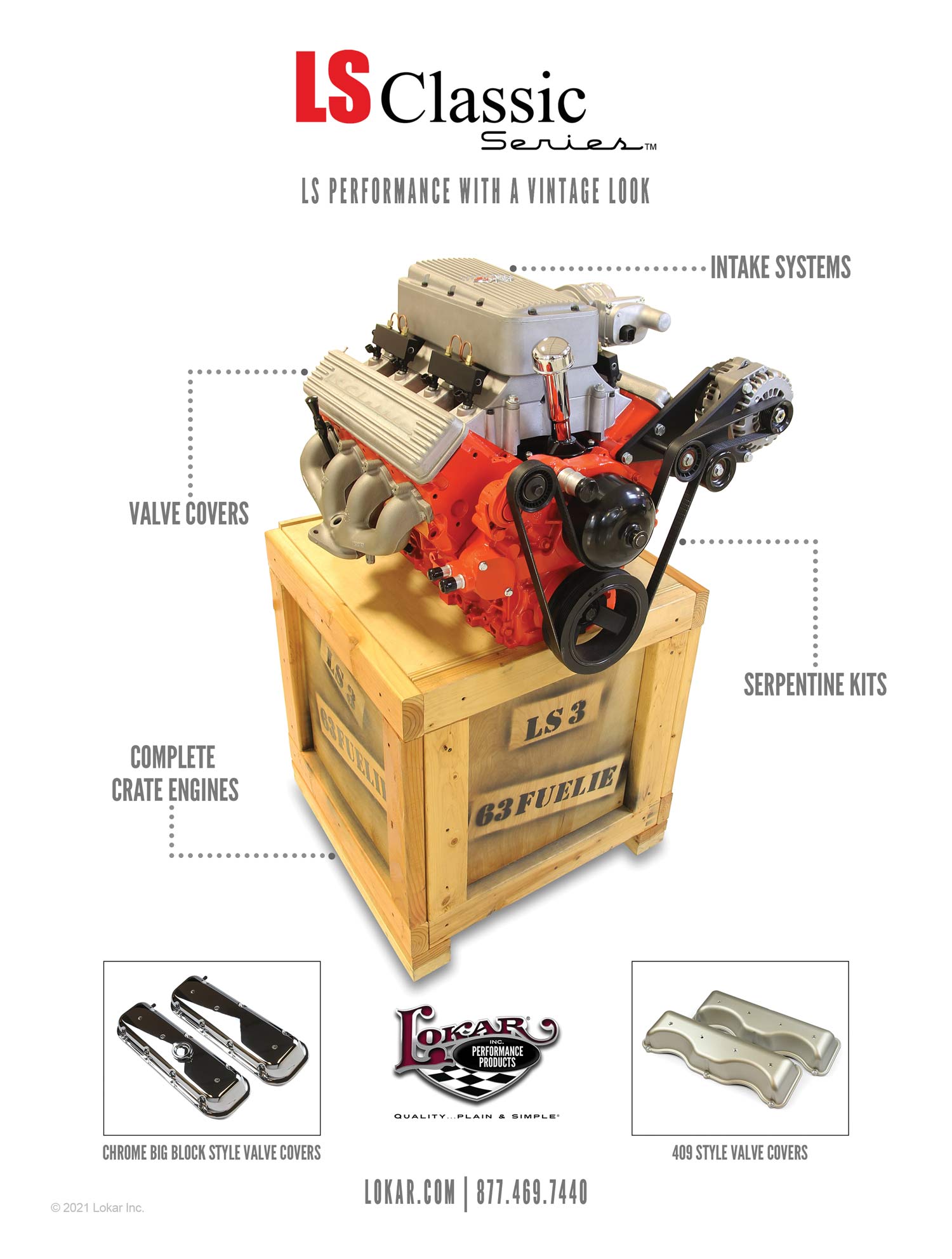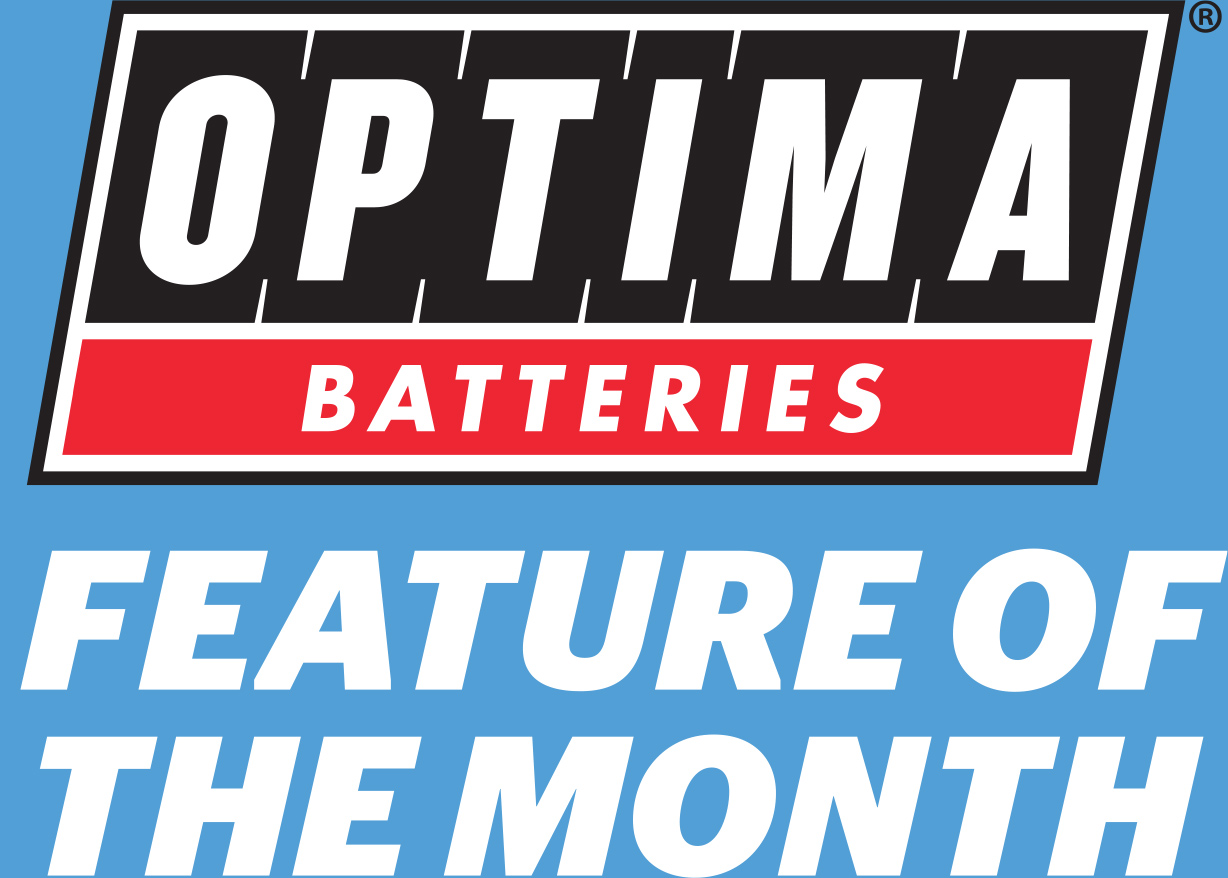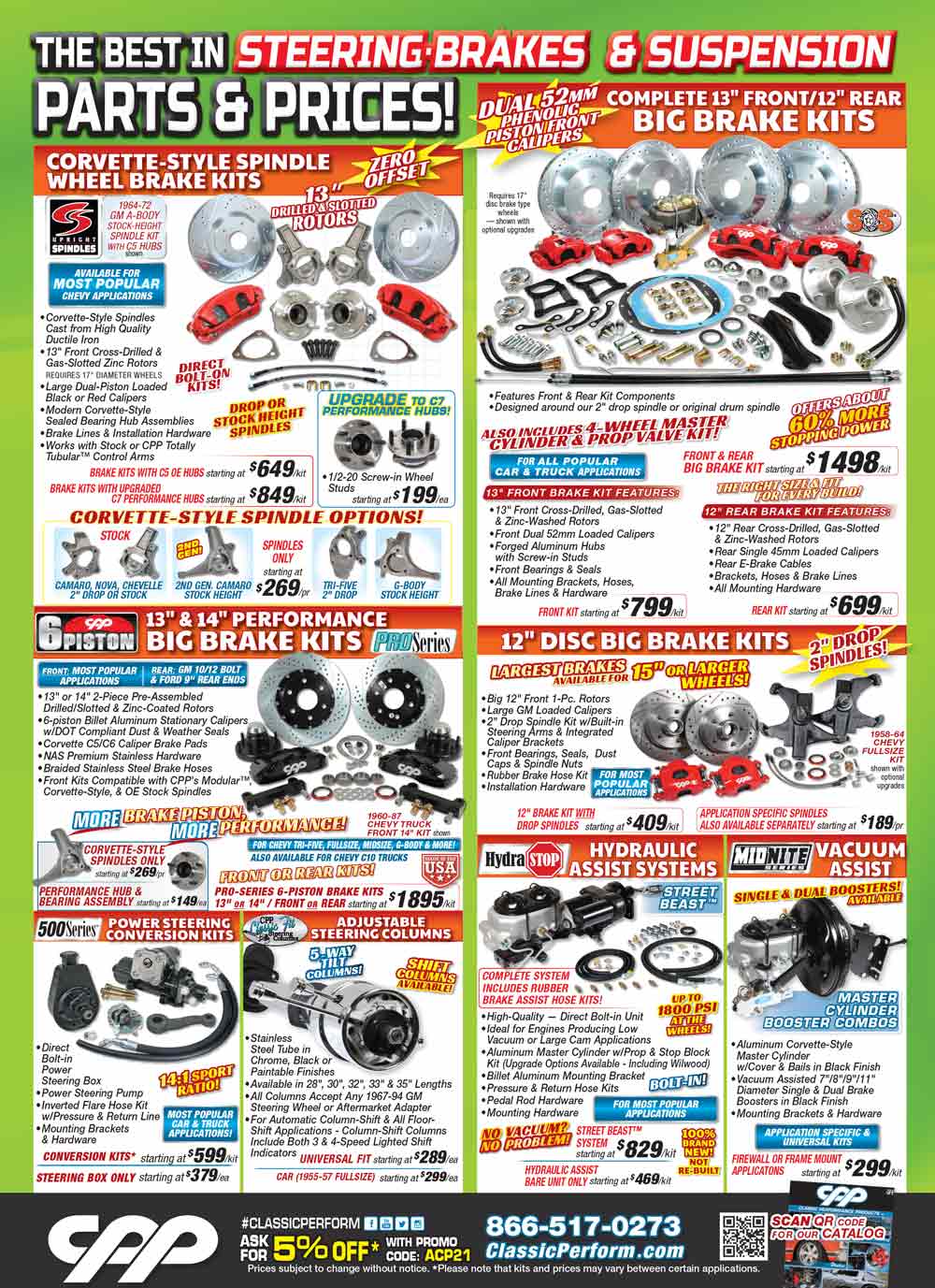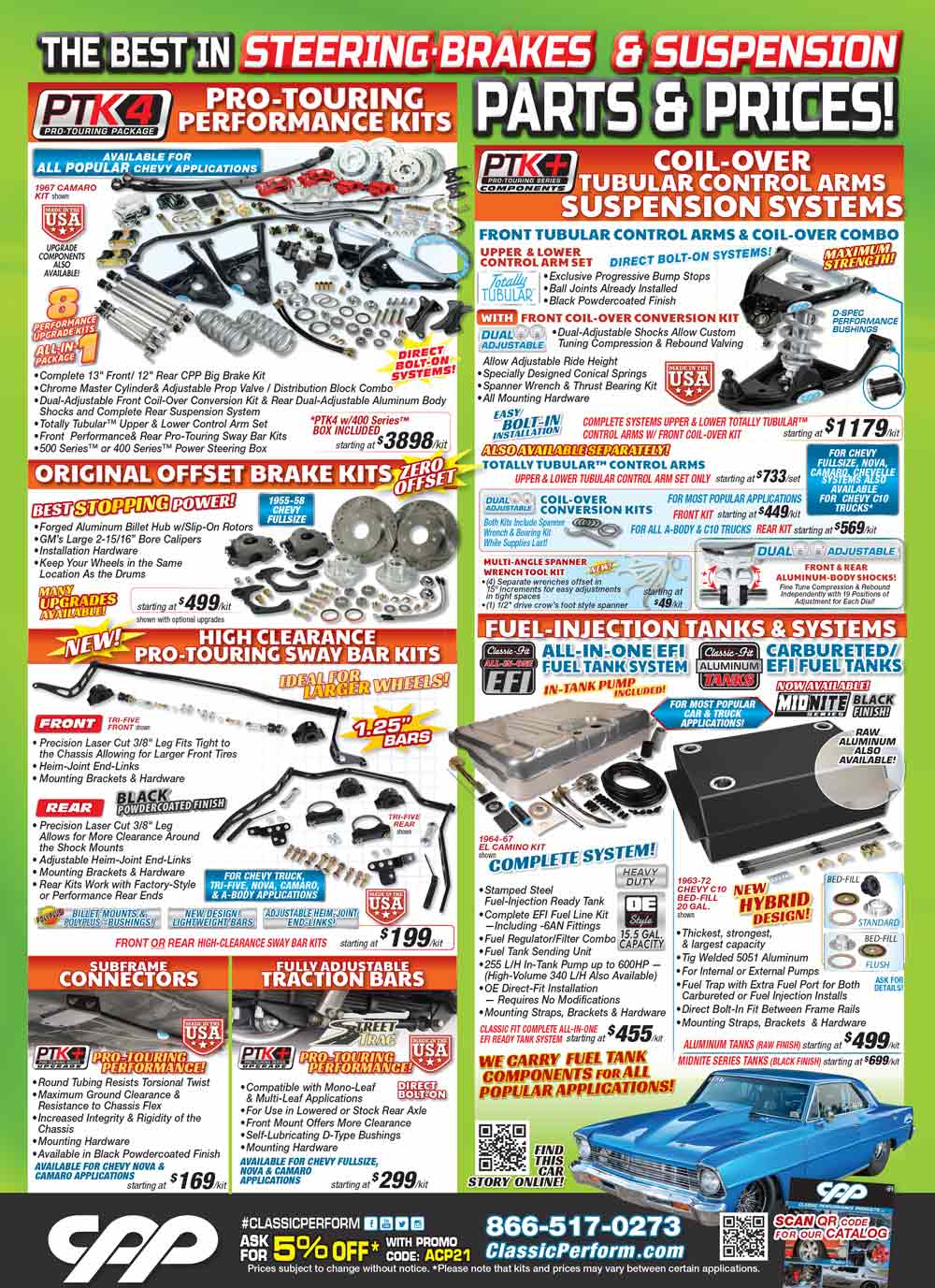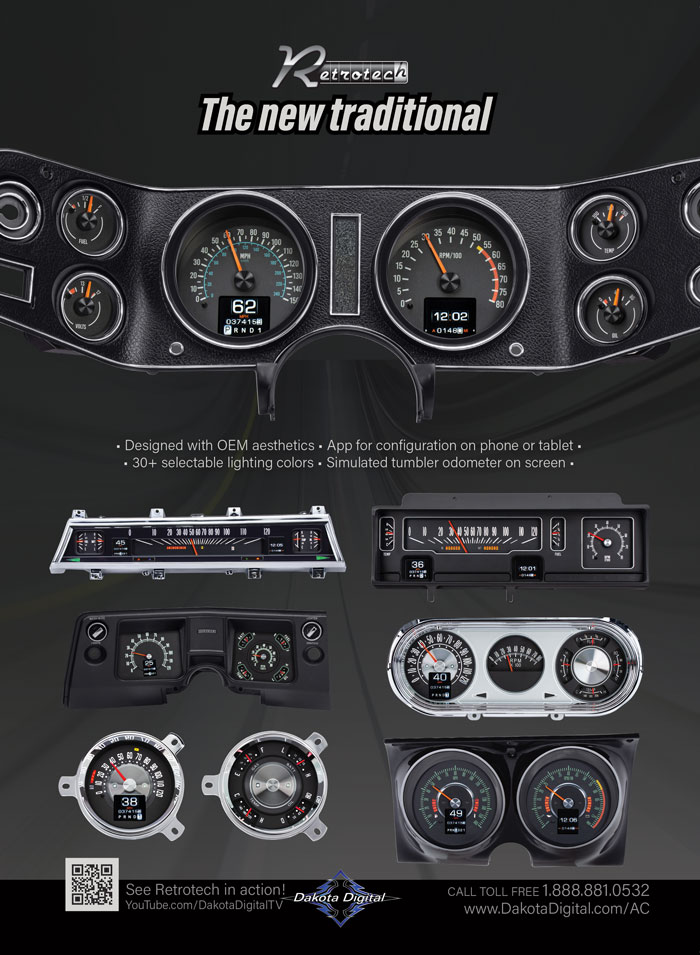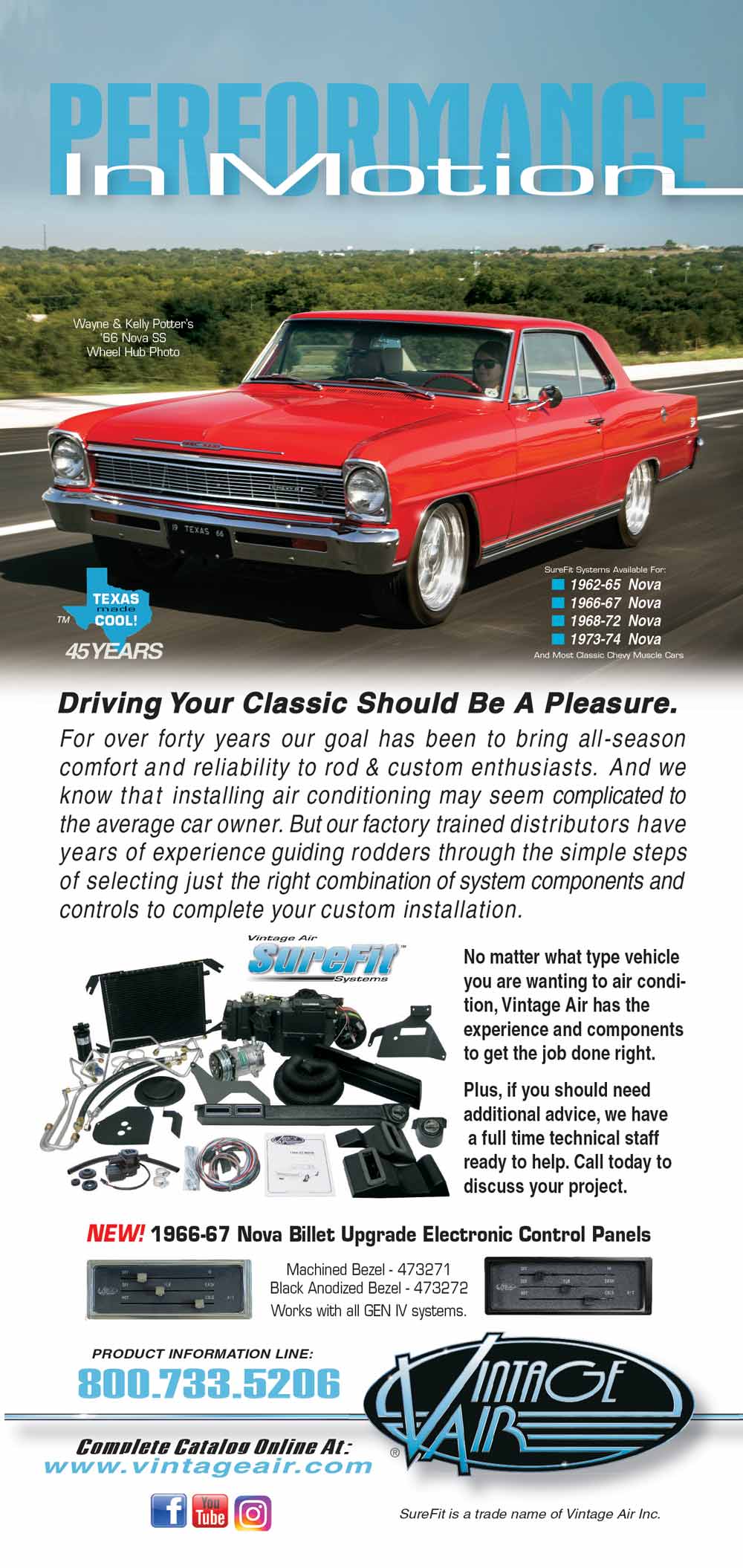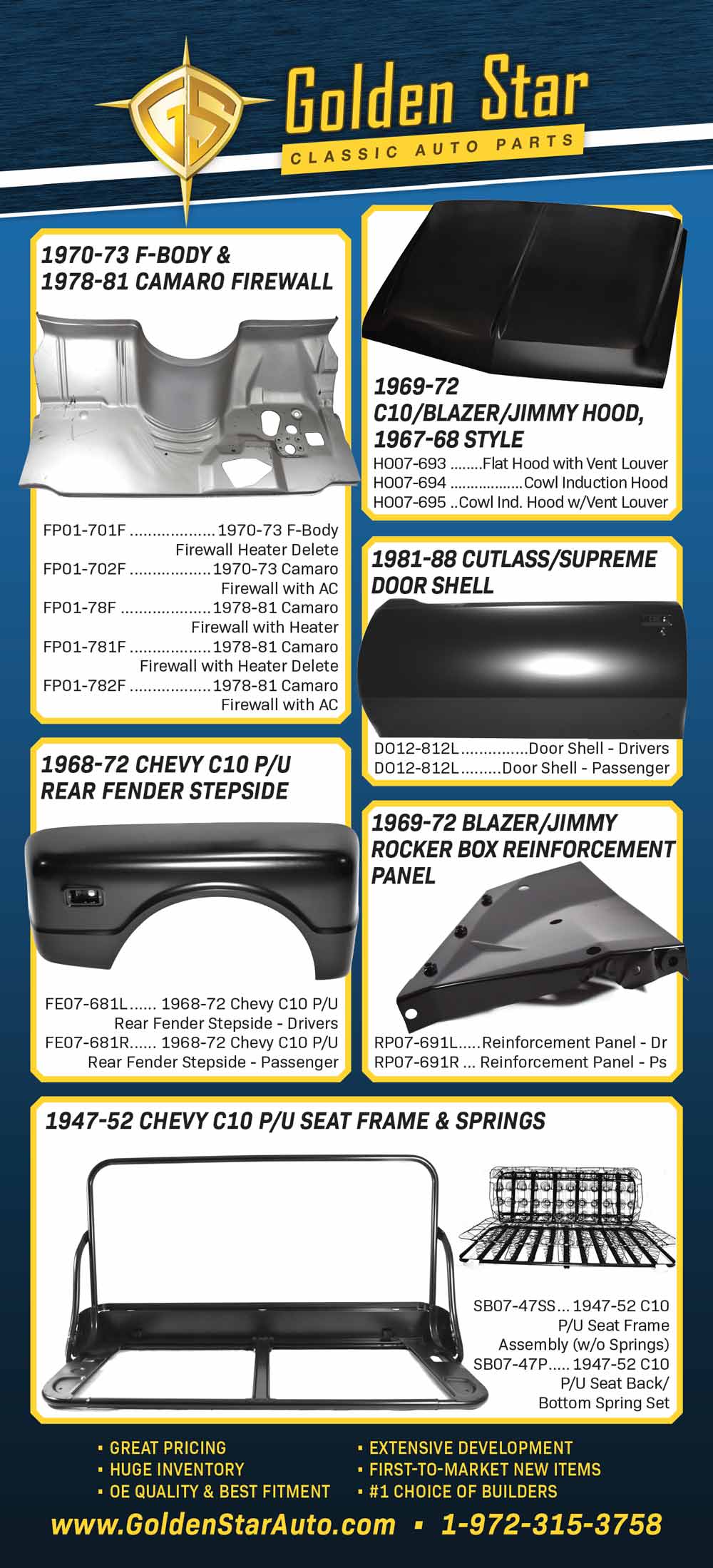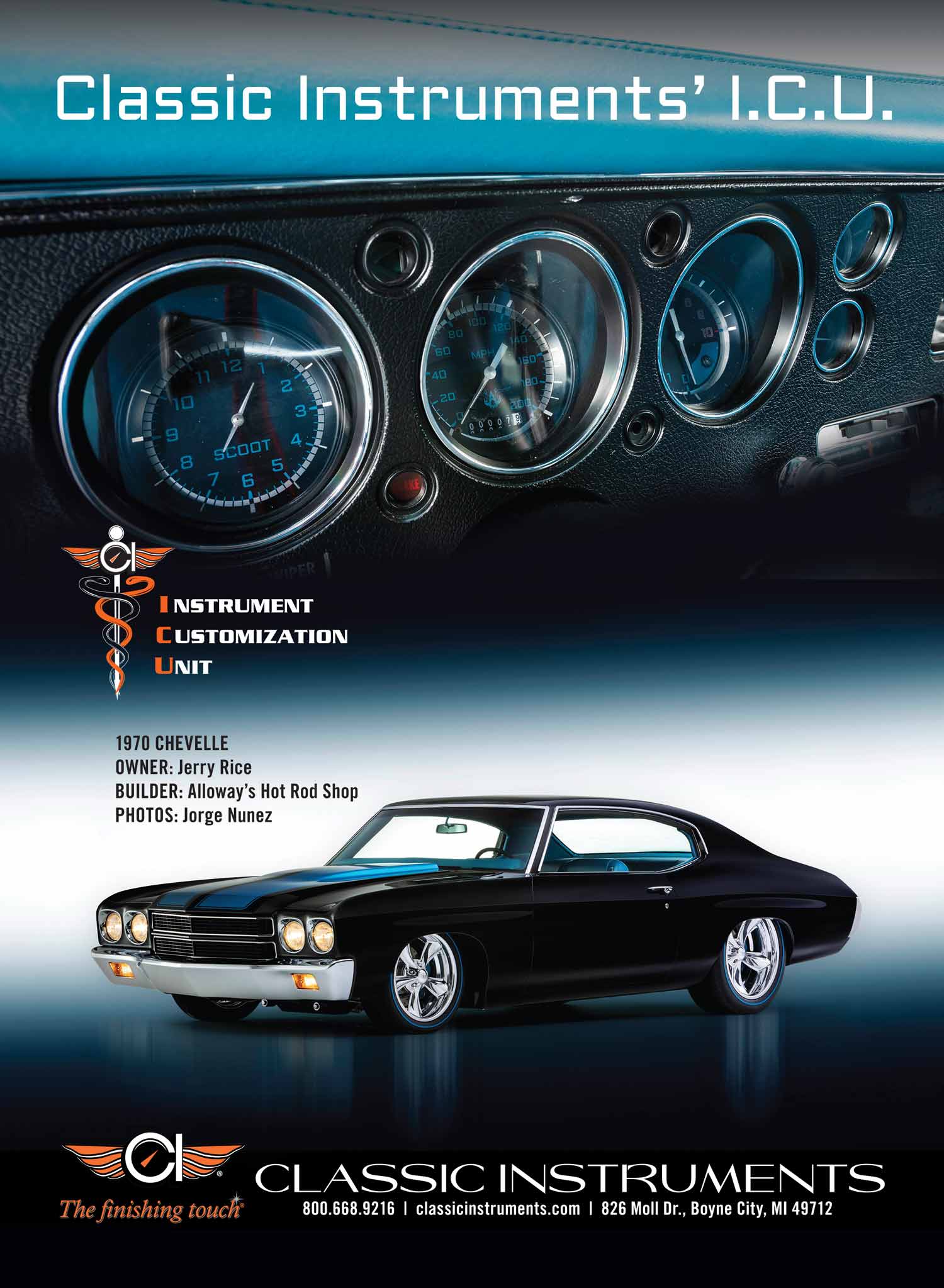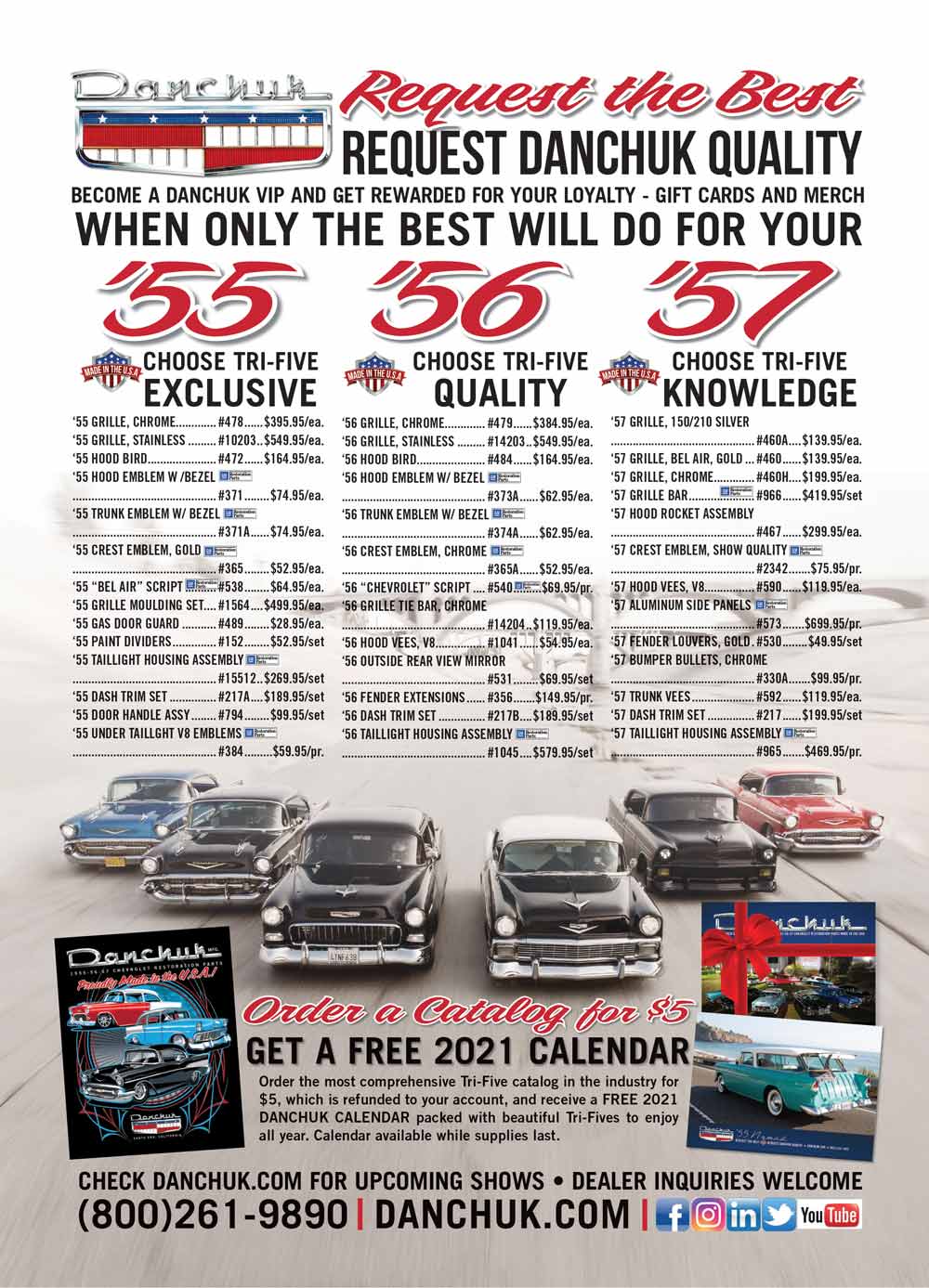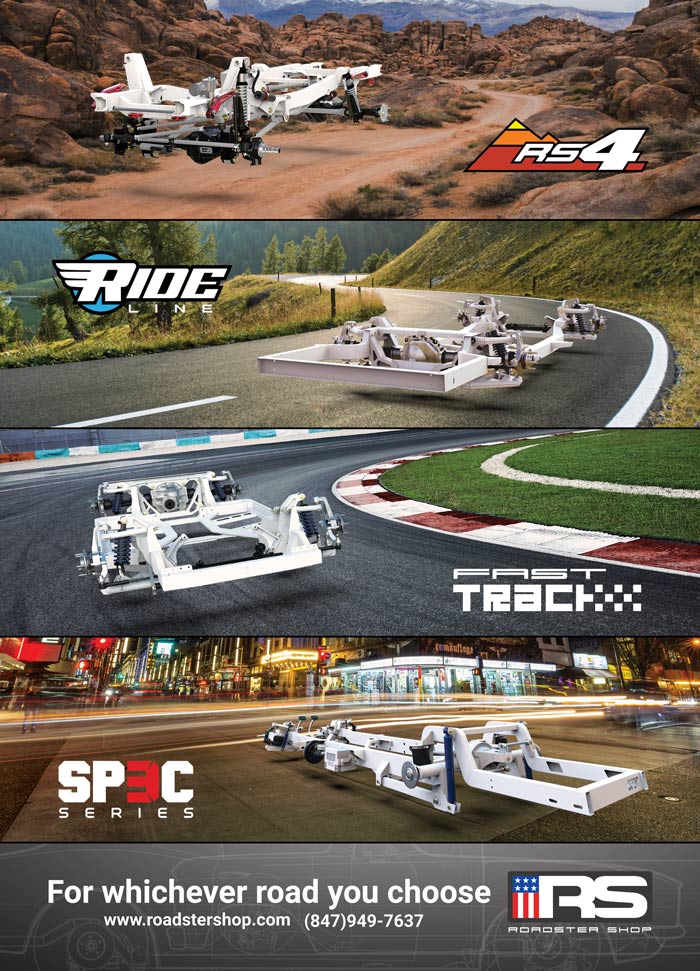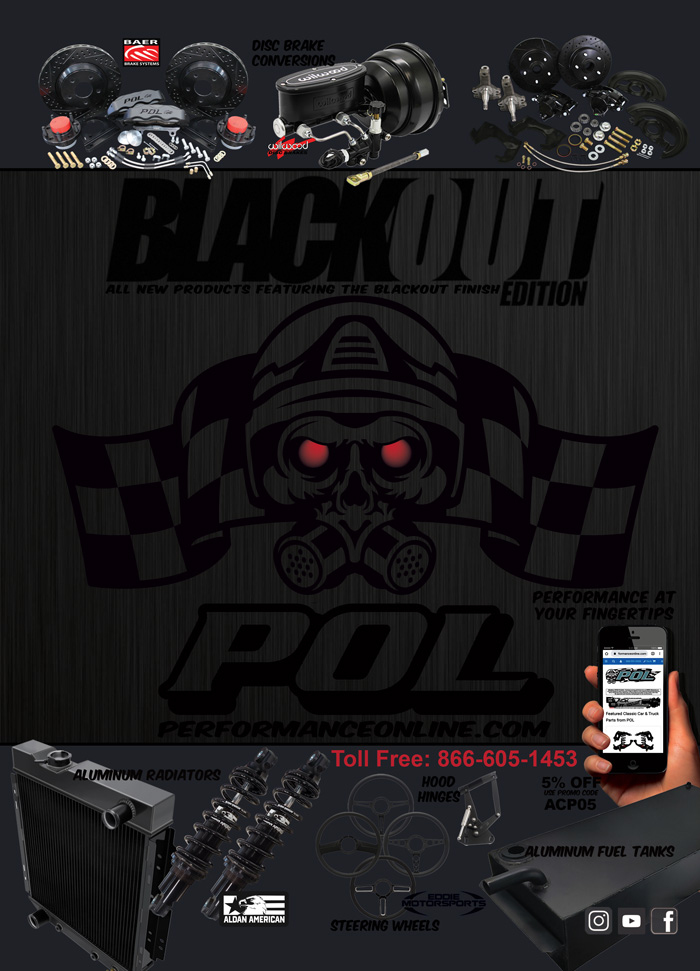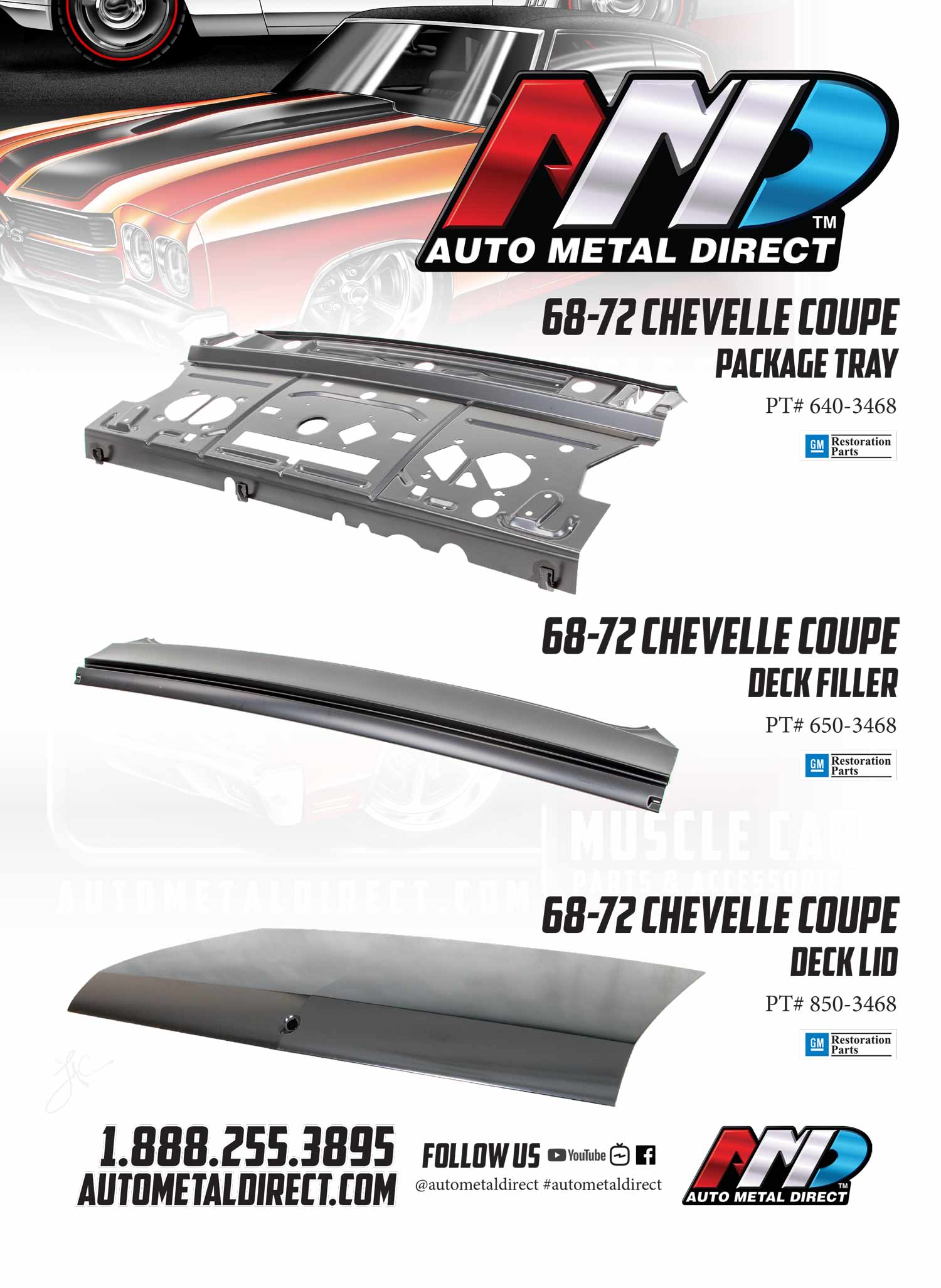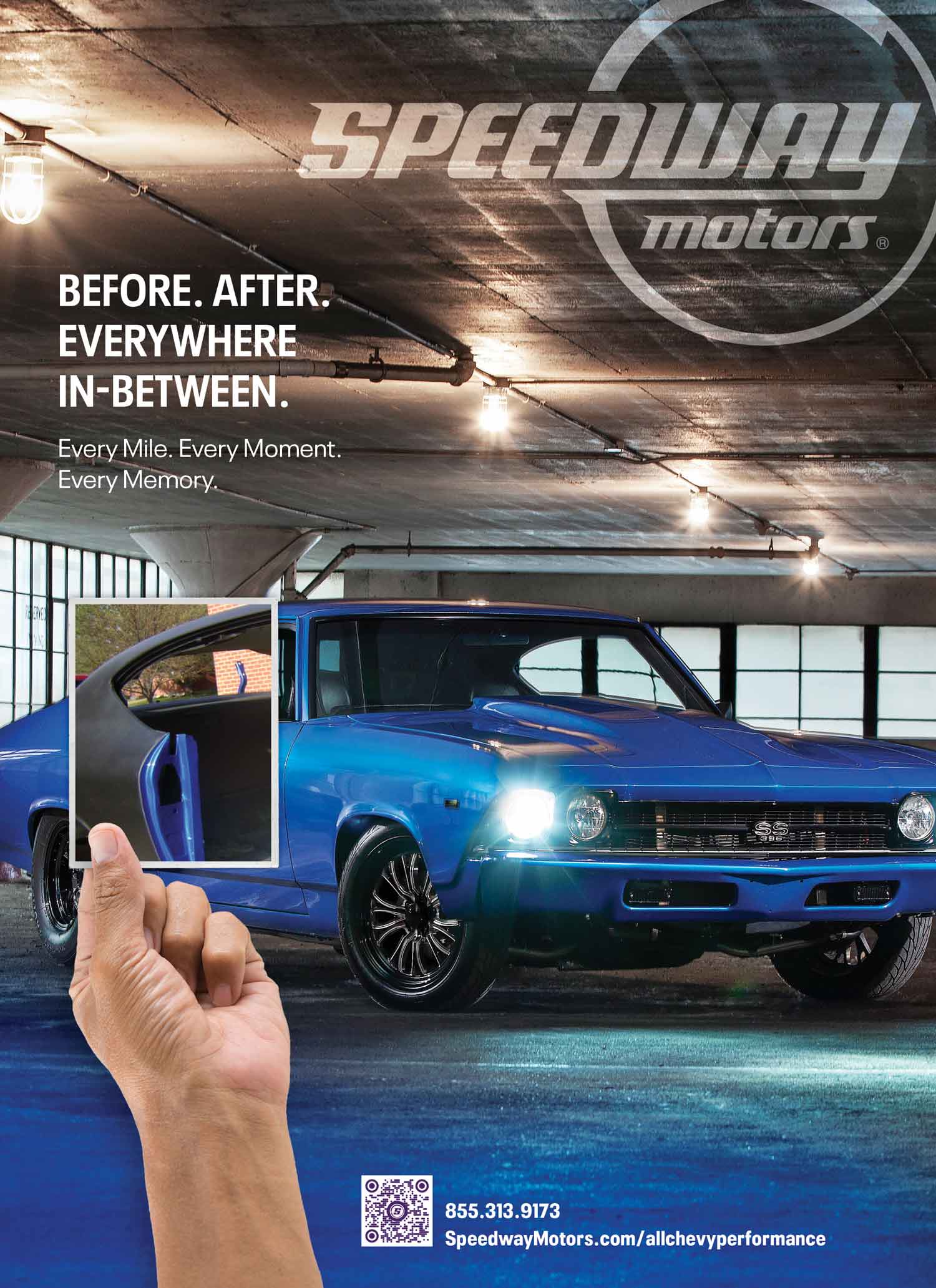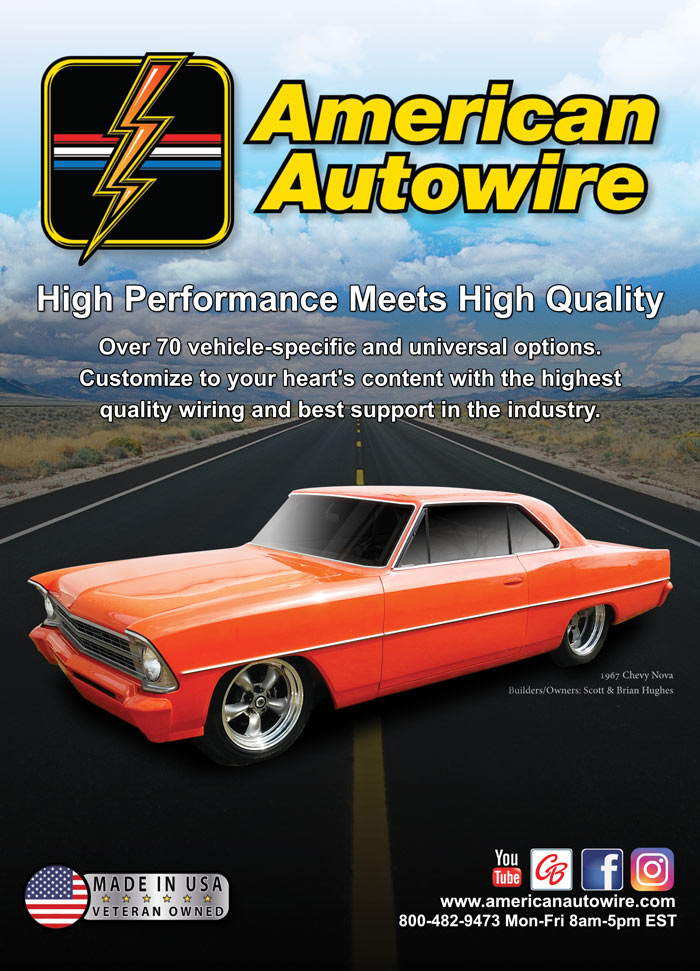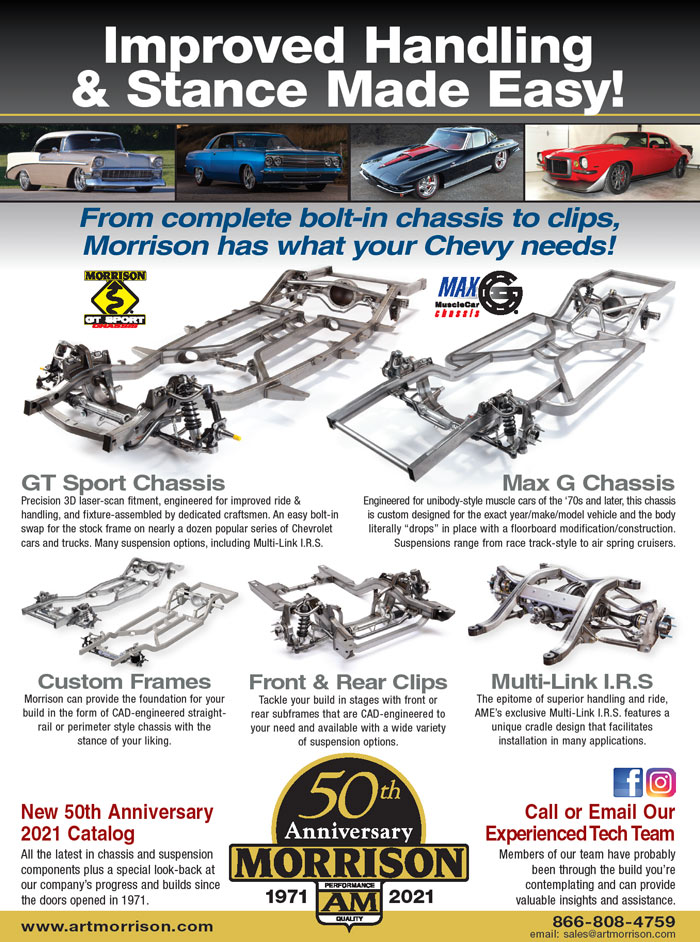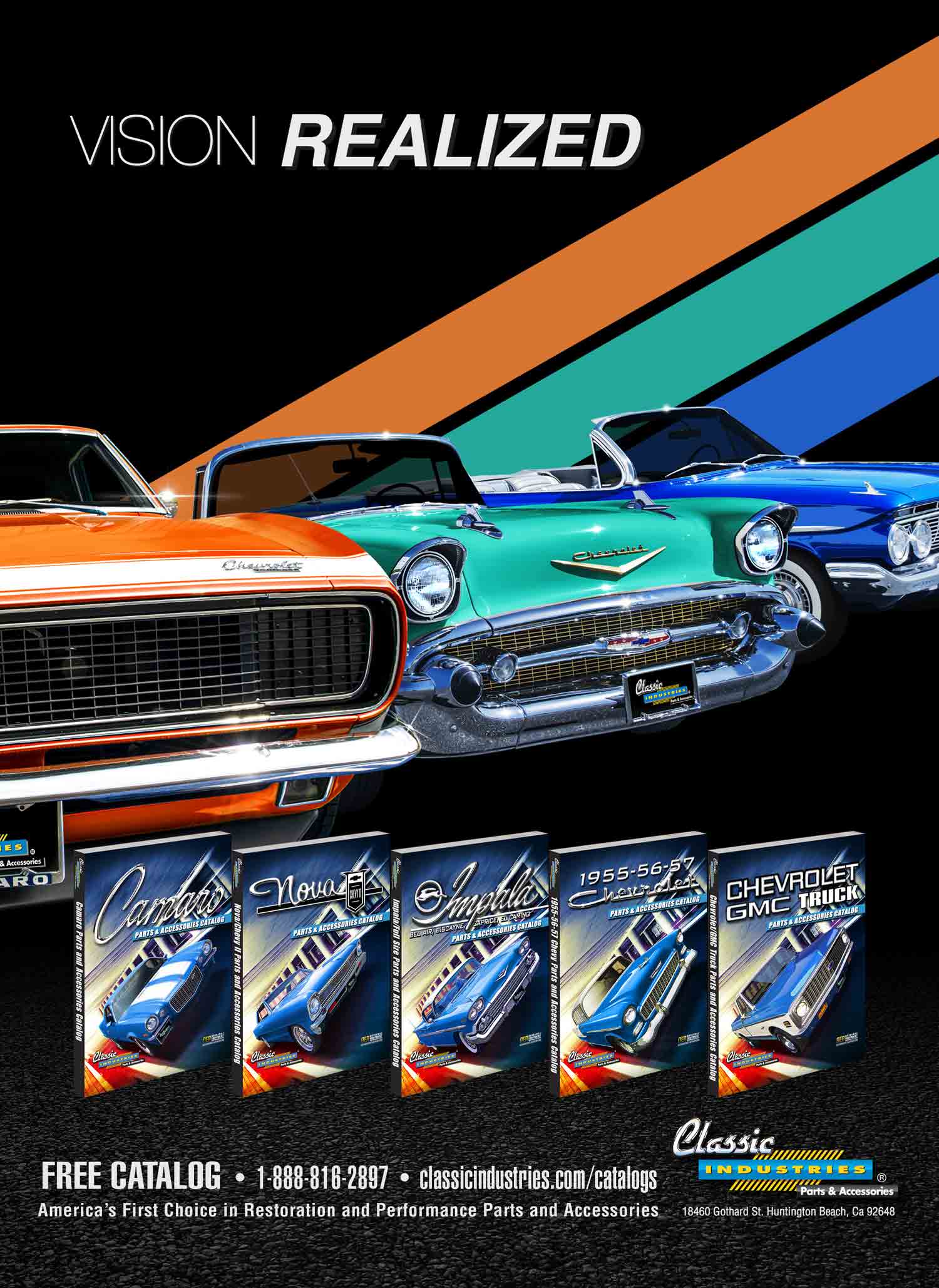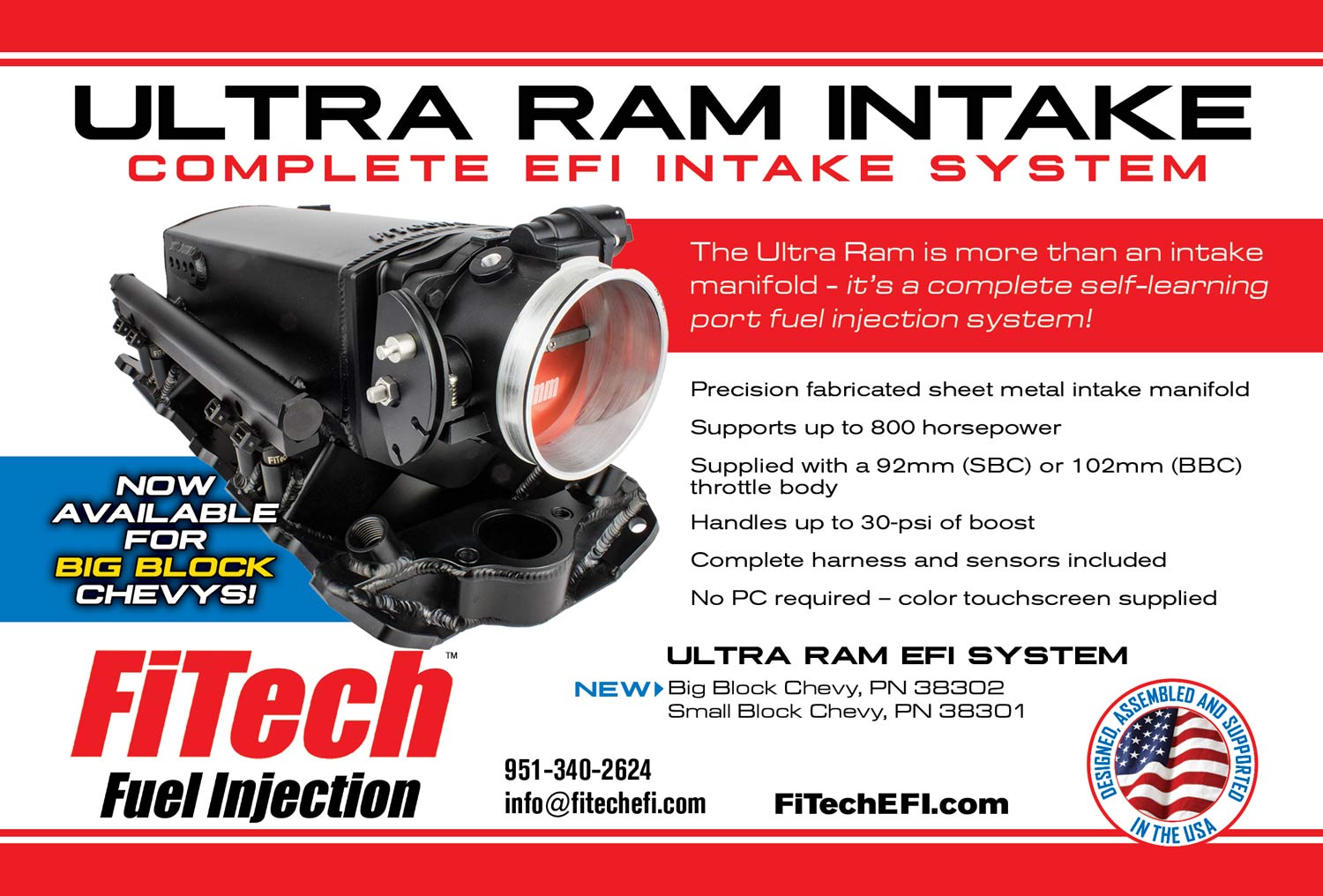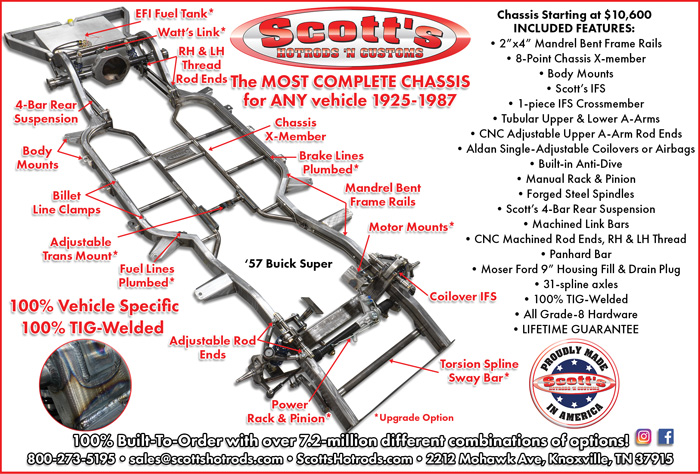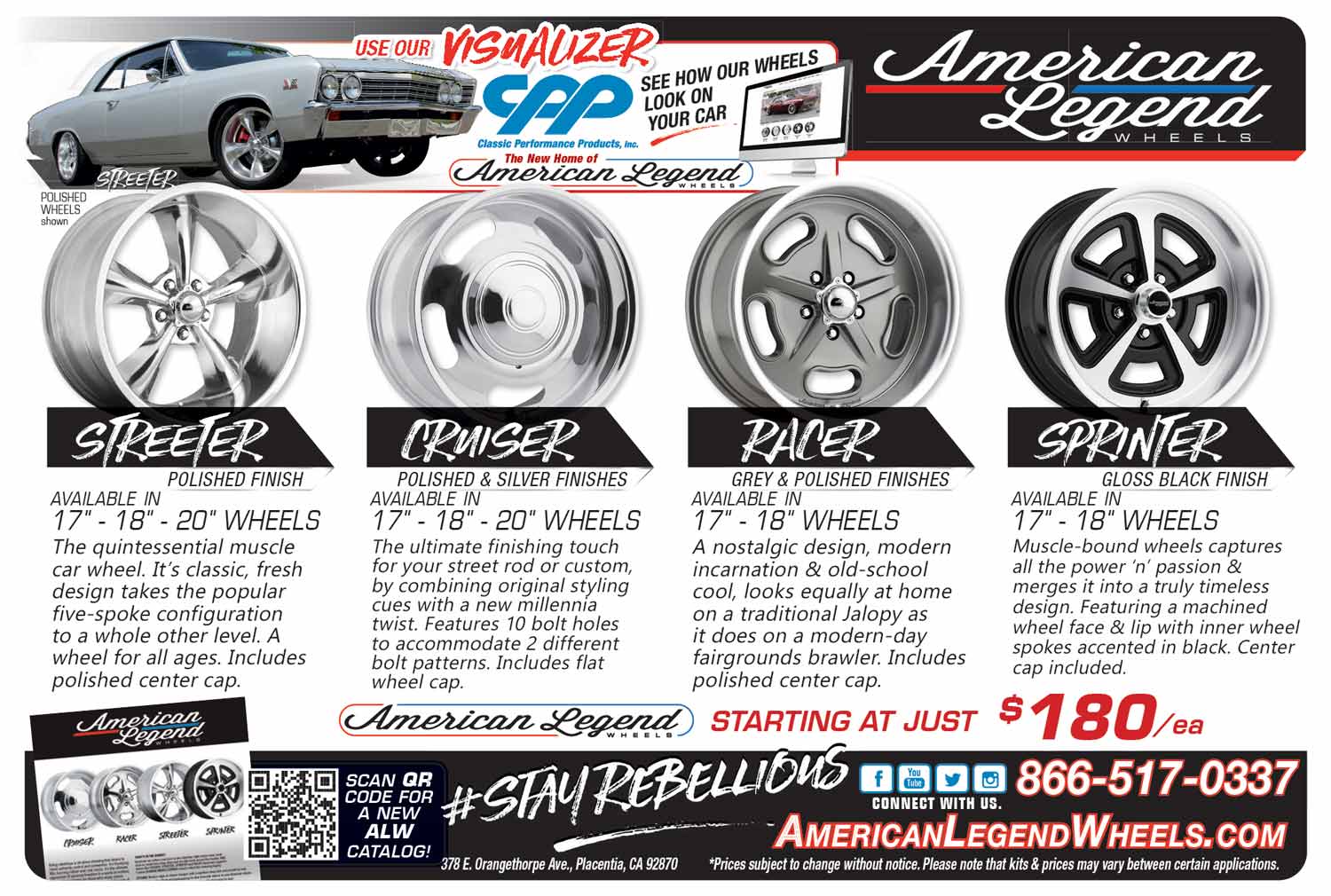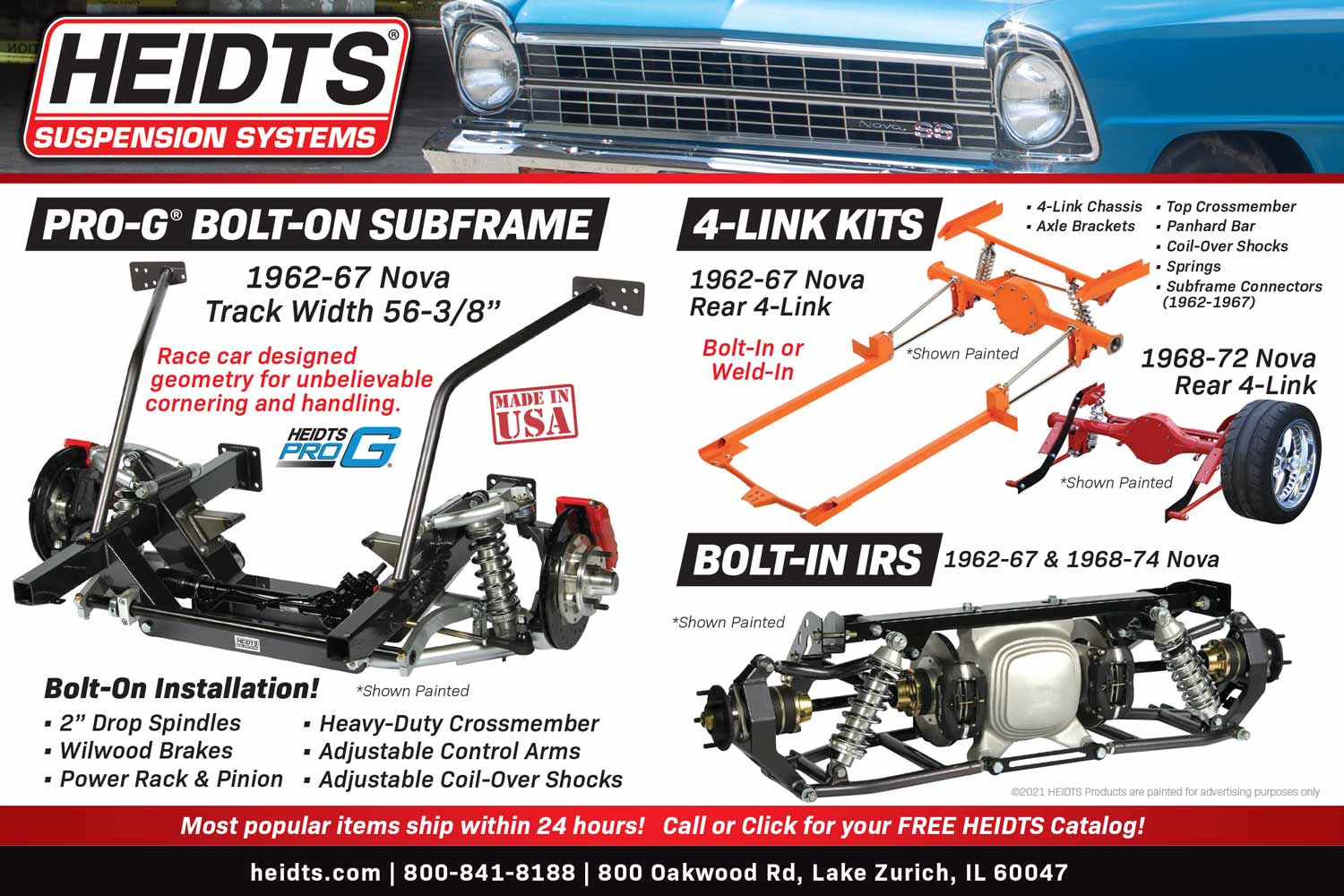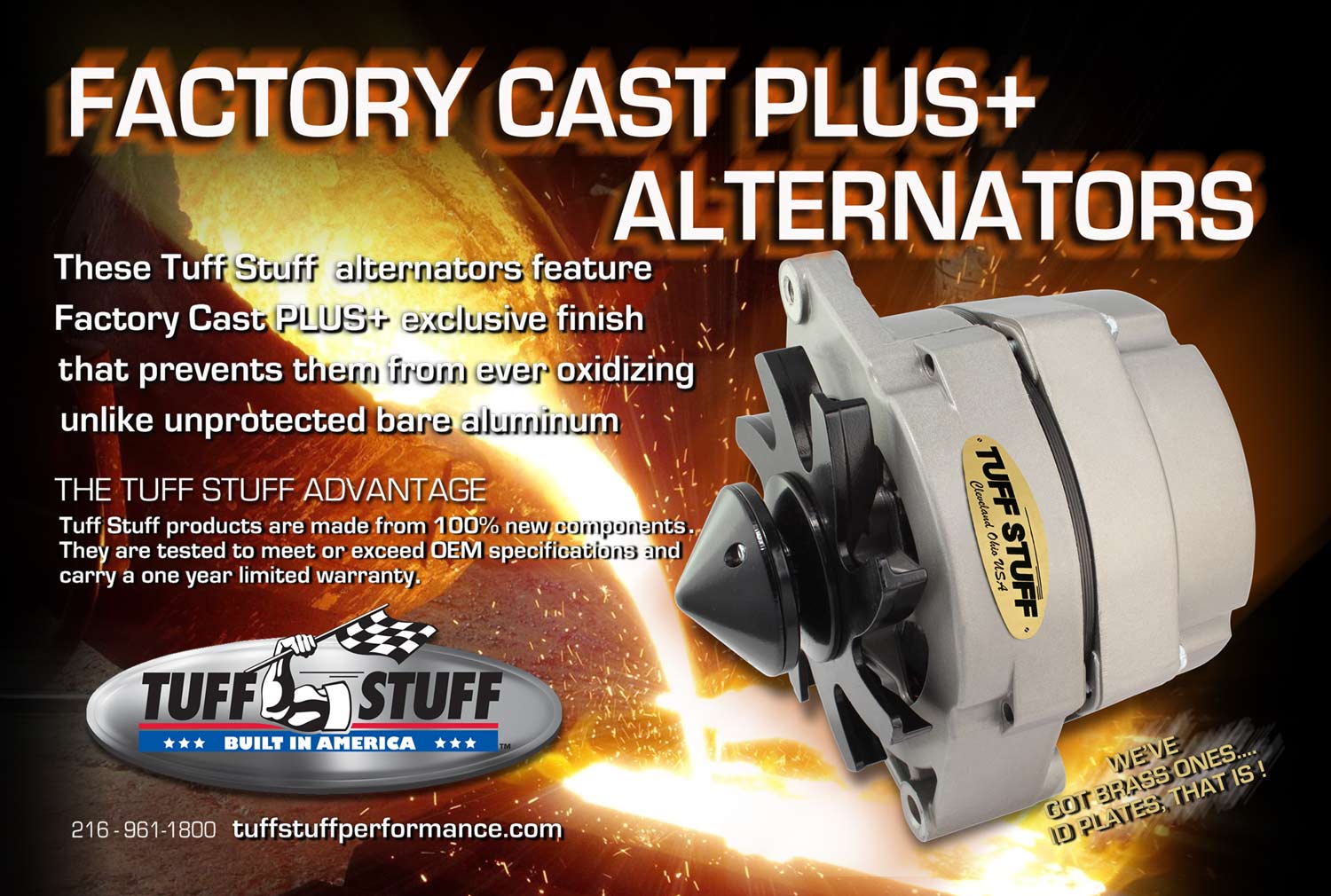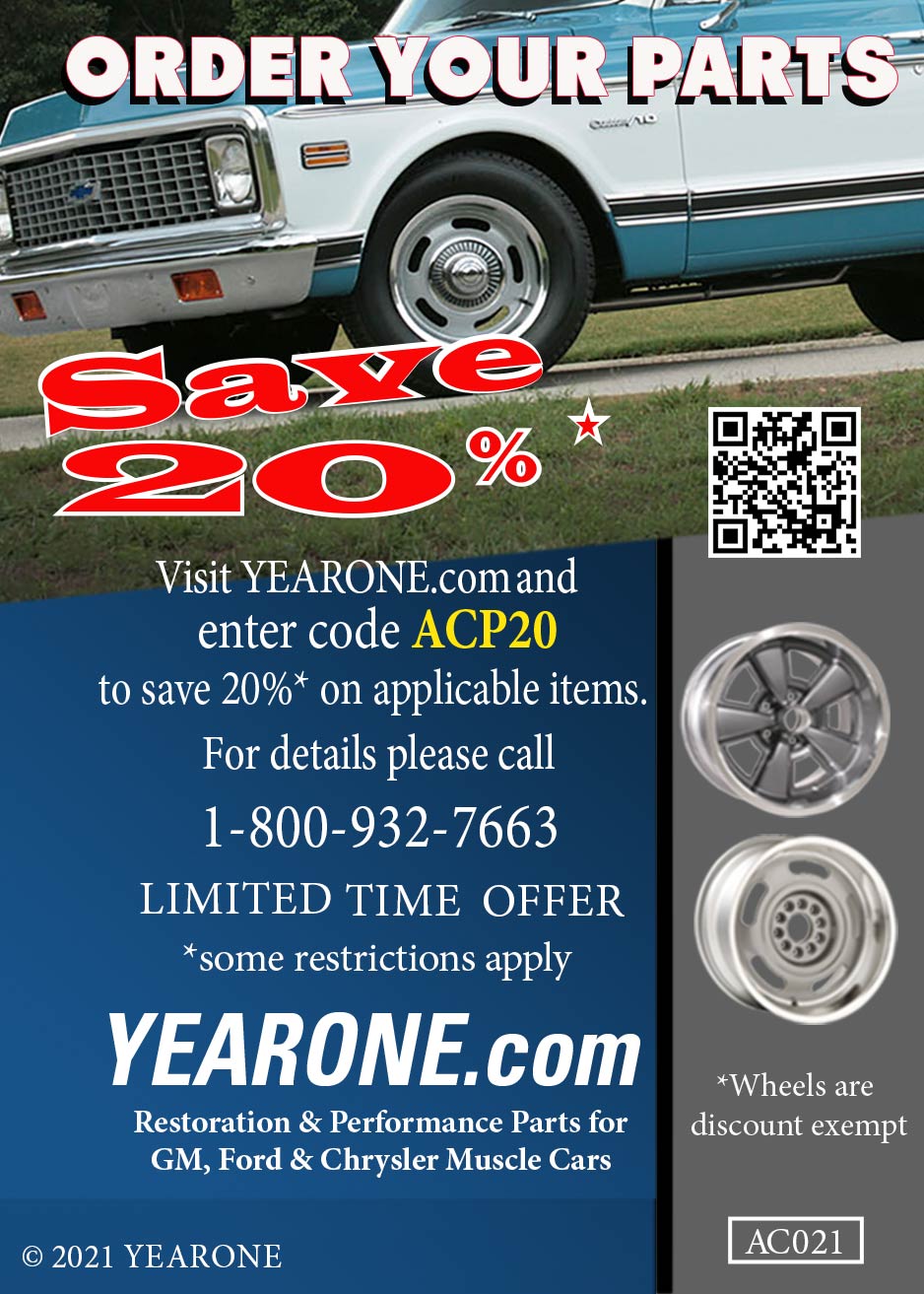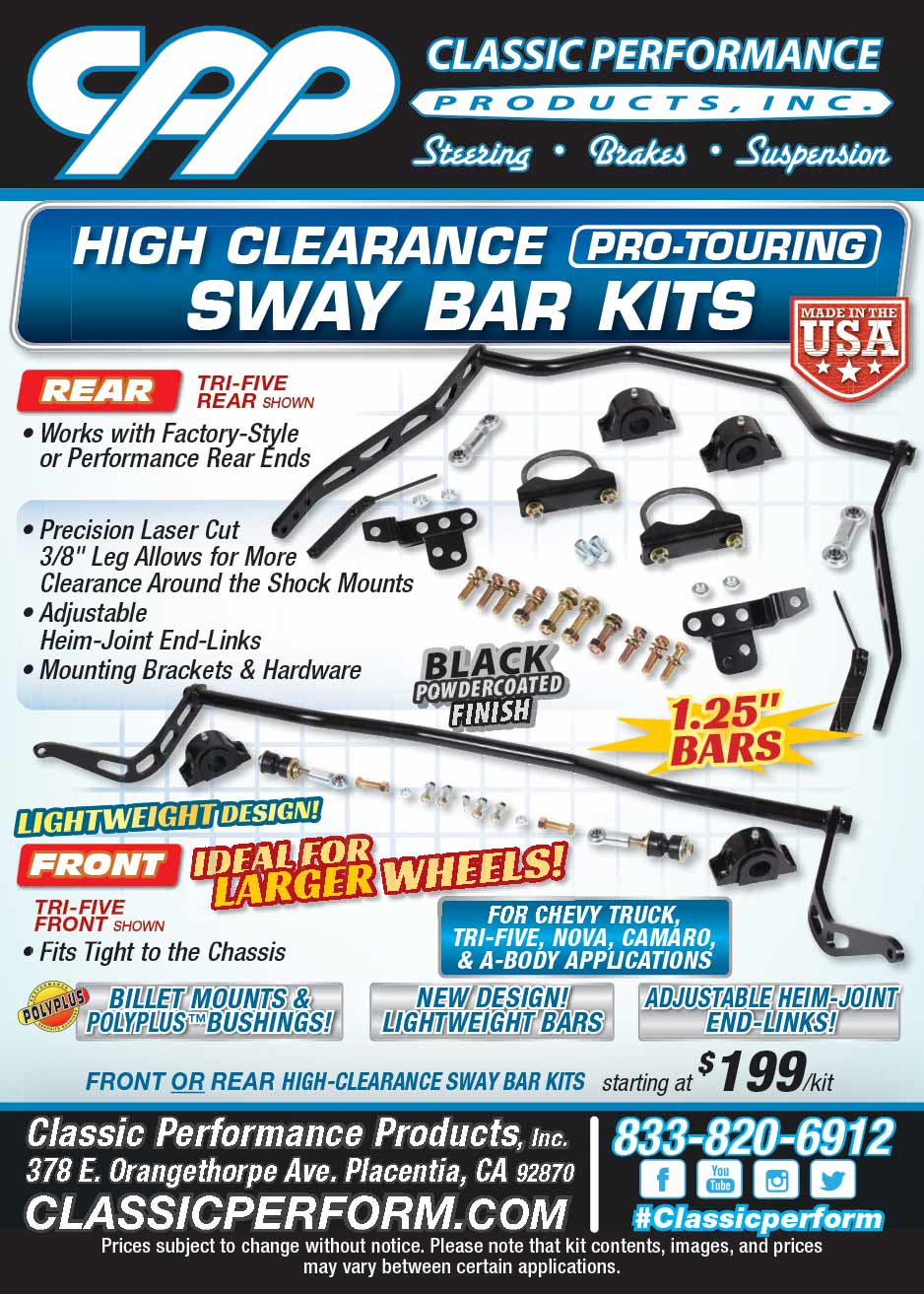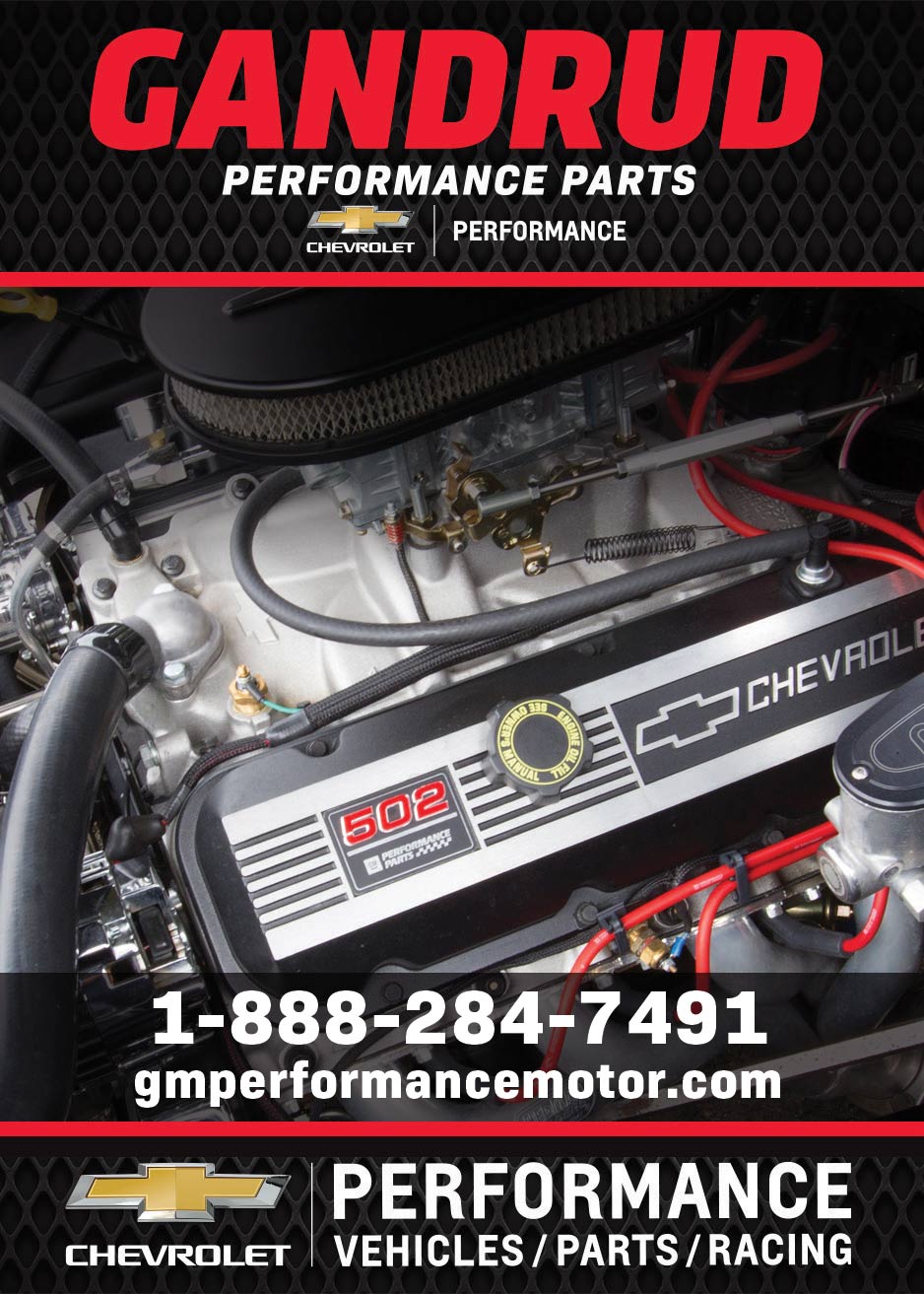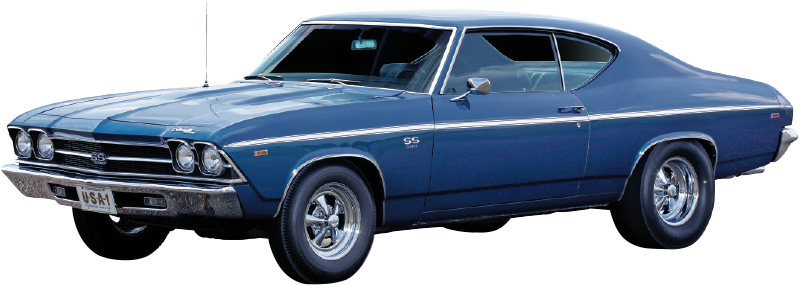


for 15-inch wheels
 TOC
TOC
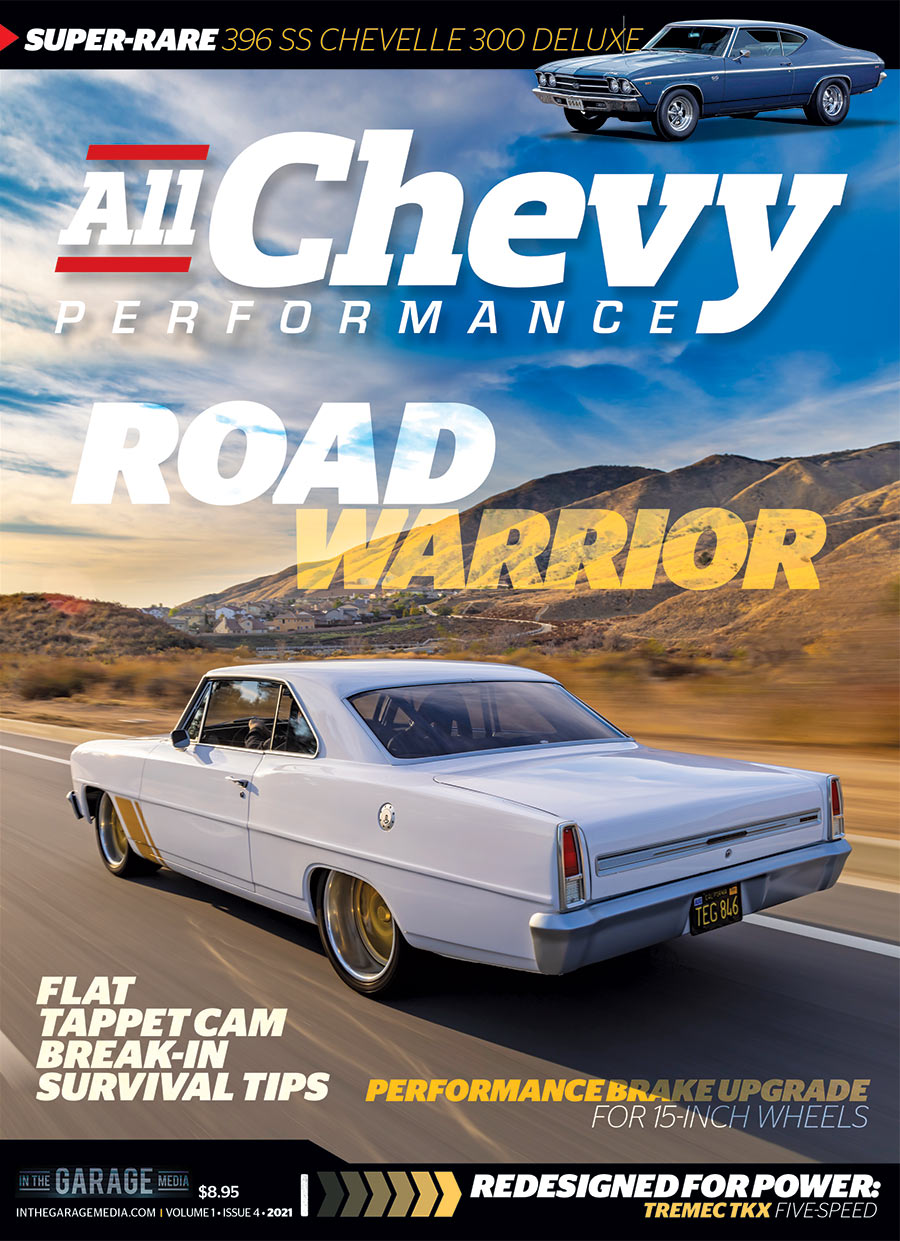
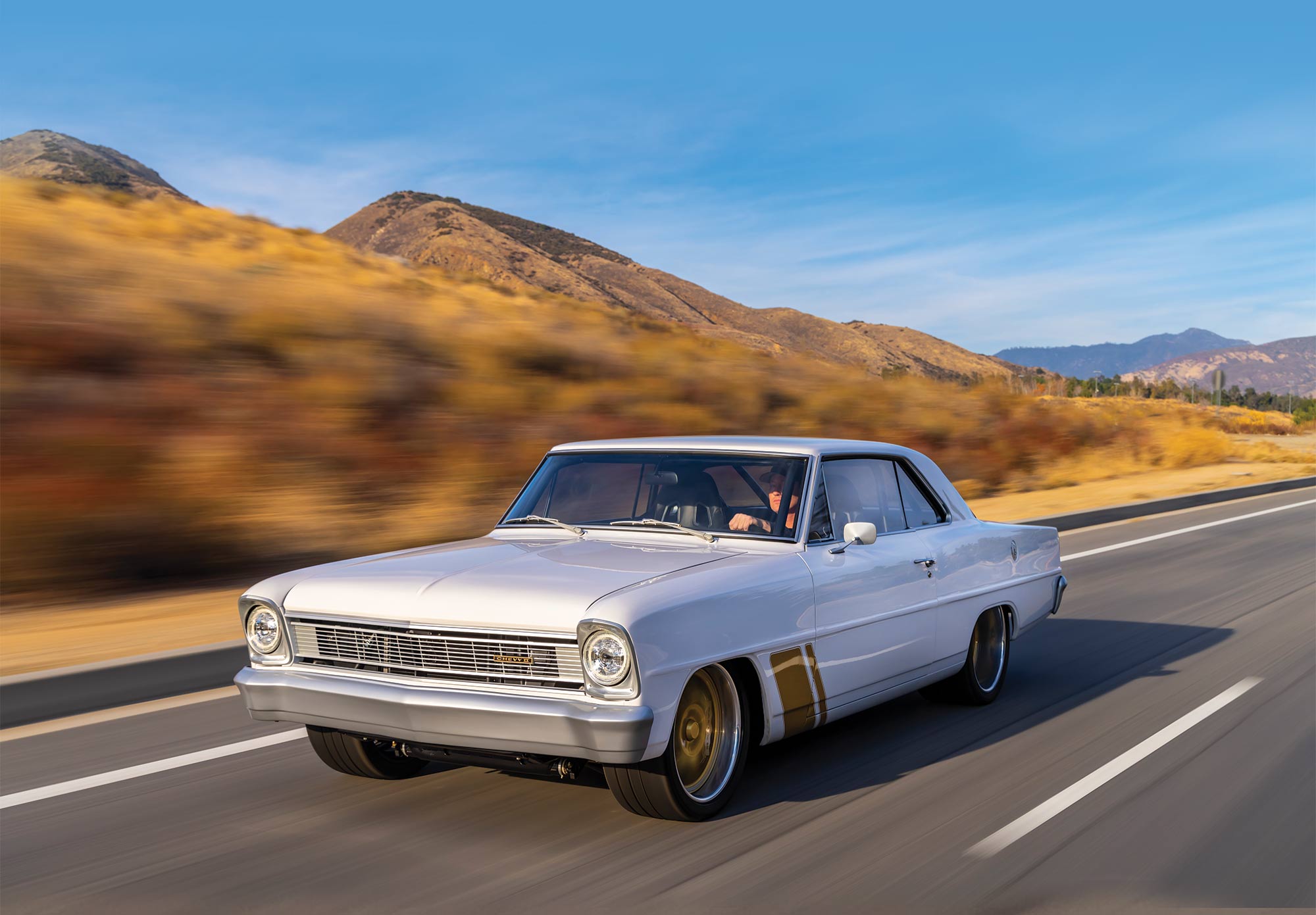

ROB MUNOZ
Wes Allison, Tommy Lee Byrd, Ron Ceridono, Grant Cox, Dominic Damato, Tavis Highlander, Jeff Huneycutt, Barry Kluczyk, Scotty Lachenauer, Jason Lubken, Steve Magnante, Ryan Manson, Jason Matthew, Josh Mishler, Evan Perkins, Richard Prince, Todd Ryden, Jason Scudelleri, Jeff Smith, Tim Sutton, and Chuck Vranas – Writers and Photographers
Mark Dewey – National Sales Manager
Janeen Kirby – Sales Representative
Patrick Walsh – Sales Representative
Travis Weeks – Sales Representative
AllChevyPerformance.com
ClassicTruckPerformance.com
ModernRodding.com
InTheGarageMedia.com
subscriptions@inthegaragemedia.com
ads@inthegaragemedia.com
info@inthegaragemedia.com

The All Chevy Performance trademark is a registered trademark of In The Garage Media.
1350 E. Chapman Ave. #6550, Fullerton, CA 92834-6550.



 FIRING UP
FIRING UP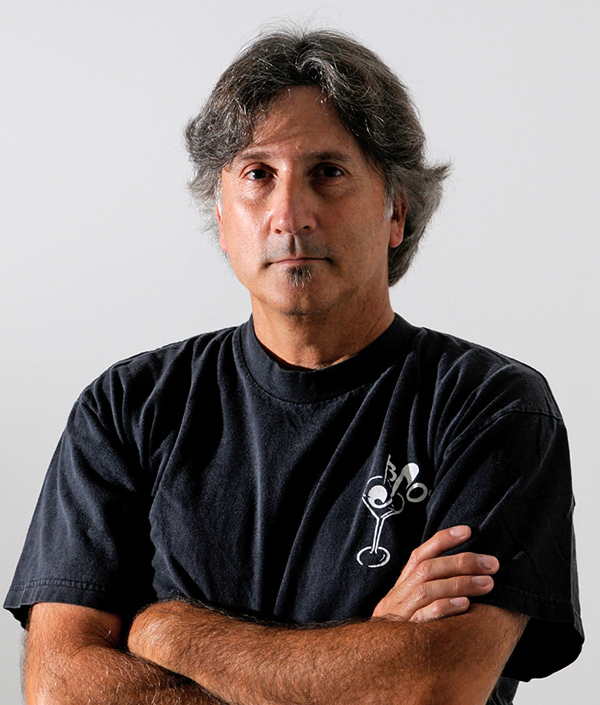

 BY NICK LICATA
BY NICK LICATAs we continue navigating our way through the muscle car hobby, there seems to be no shortage of changes and innovations. That’s good for us as it keeps things fresh.
Decades ago, the average day two mods included a few basic engine bolt-ons consisting of performance carburetors, manifolds, headers, exhausts systems, mufflers, and the like. Aftermarket wheels and tires were a must if you wanted your ’60s muscle car to look cooler than what the factory offered. Over time, upgrades became more elaborate and extensive by way of suspension modifications, full chassis installations, and complete engine swaps. Today, seeing an LS or LT between the framerails of a classic muscle car is more common than finding one with an engine reminiscent of what the car originally came with.
When it comes to power, there are those who still prefer the looks, sound, and performance of a big-block. And let’s not forget about the small-block crowd—some just like keepin’ it old school. At the same time, LS and LT swaps are more common today than ever.
 Parts Bin
Parts Bin BY Nick Licata
BY Nick Licata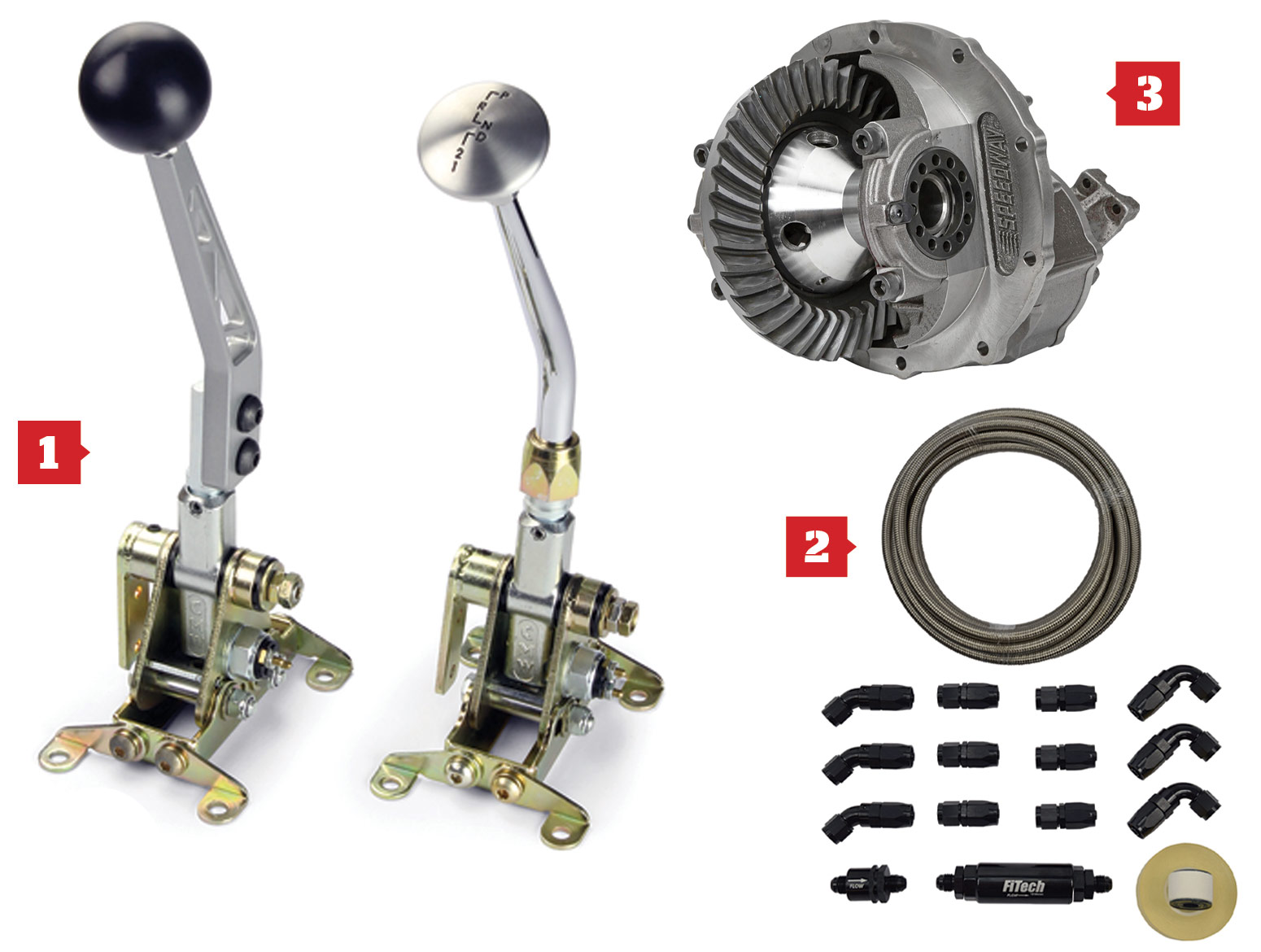
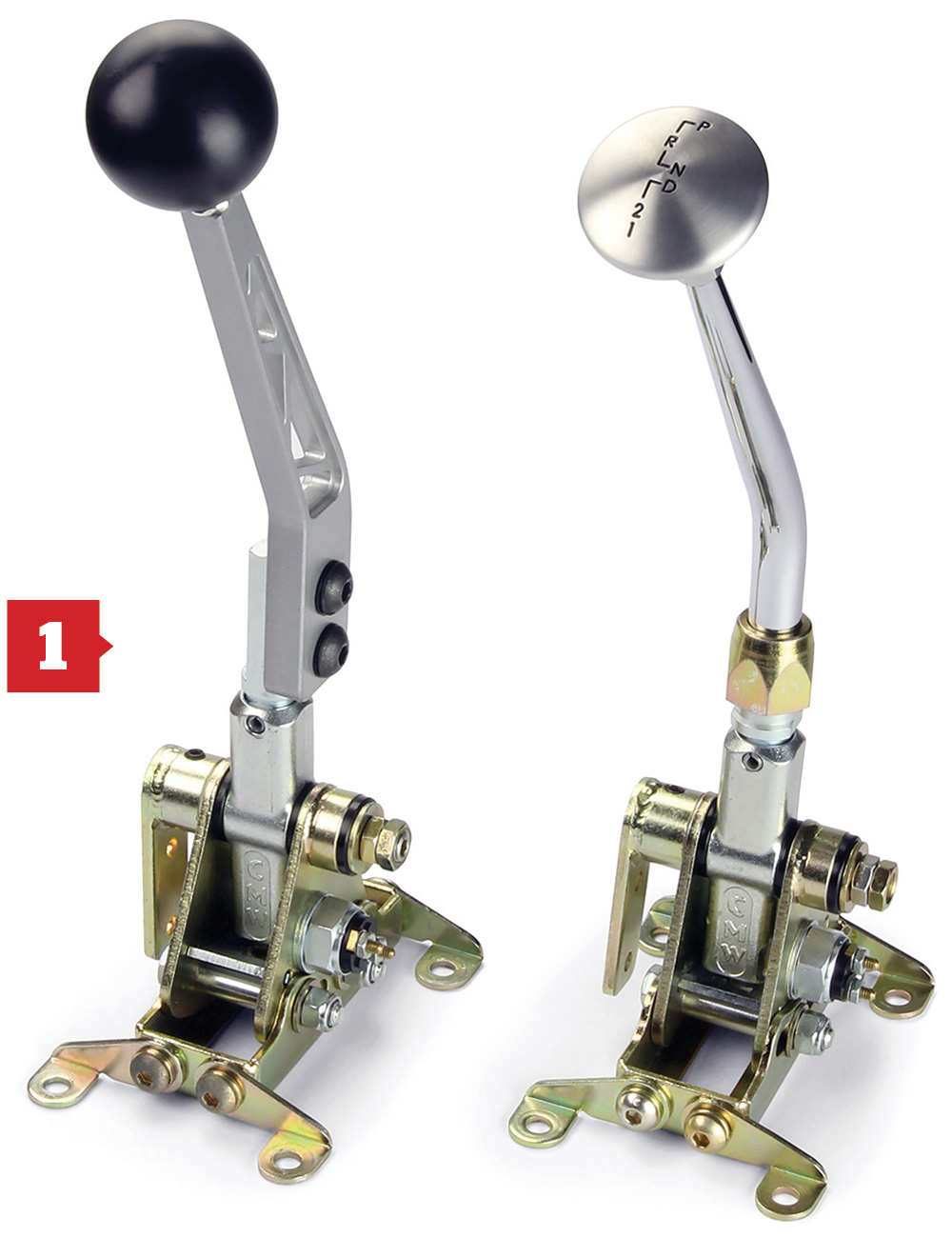
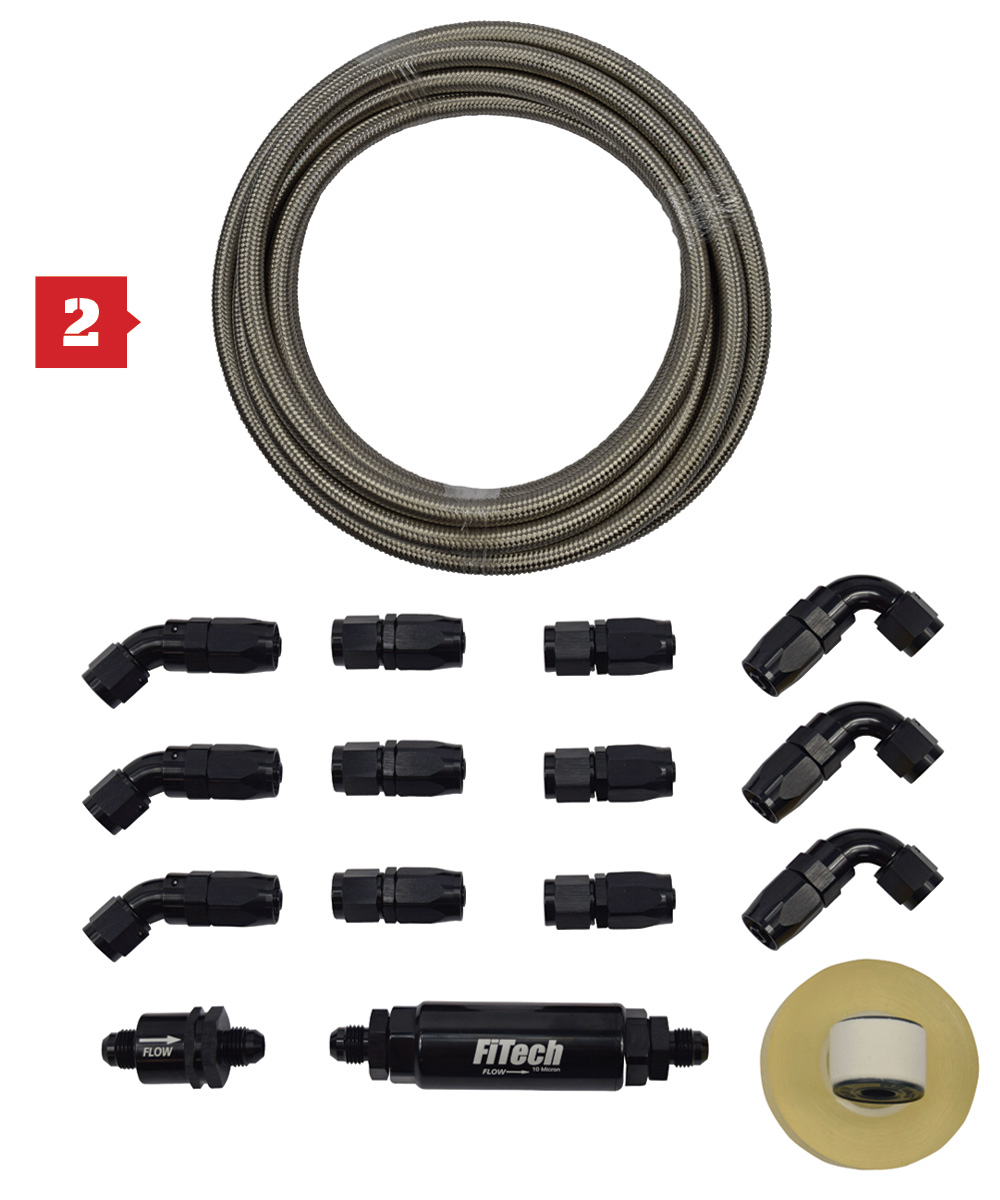
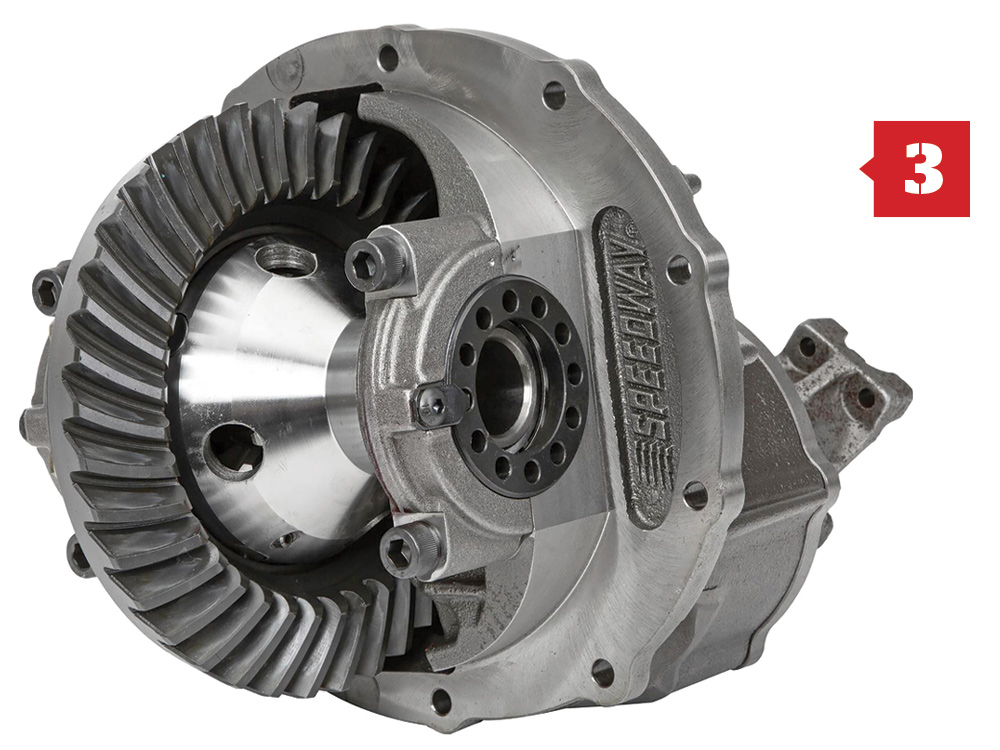
The stainless steel braided line, available in natural and black, is chemical-resistant for long life and great looks. The rubber internal hose material is engineered for use with pump gas, methanol, ethanol, or alcohol fuels. To complement the fuel lines, 12 -6 fittings are supplied along with a serviceable 10-micron fitting and check valve. Each kit includes 20 or 40 feet of braided hose with 12 -6 AN fittings, including three 90-degree, three 45-degree, and six straight fittings, along with a 10-micron fuel filter and inline check valve.
 CHEVY CONCEPTS
CHEVY CONCEPTS
hris Holstrom Concepts tasked me with helping to restyle an auction-purchased Corvette that was already done. Done is never really the final stage of any classic car though, and this Vette needed some help. A modern driving experience with classic looks is the goal here, and the foundation of this build is an Art Morrison GT Sport chassis with IRS. Up front, there’s a 427ci LS3 topped with Borla stack induction. A T56 handles the gears and Baer 6P 14-inch brakes keep everything in check.
The exterior has been kept simple and classic but has an attention to detail that makes it that much nicer than any 1964 ever was when it rolled off the assembly line. Bumpers have been tucked and adjusted, gaps scrutinized, and the fenders/quarters have been widened. Rosso Corsa paint caps off the bodywork, while Forgeline RS6 wheels complement the vintage theme.
Inside the cockpit the theme continues with rich two-toned leather and subtle sculpting that pays homage to the original design. Details include Vintage Air A/C, MOMO wood rim wheel, and Dakota Digital HDX gauges. Tony Miller at Stitches Custom Upholstery will handle all of the custom interior upholstery. Miller excels at such interiors and will hand-sculpt the center console, door panels, and seat foam to his standards.
 Vehicle Build By: Chris Holstrom Concepts
Vehicle Build By: Chris Holstrom ConceptsOwner: Steve Peterson
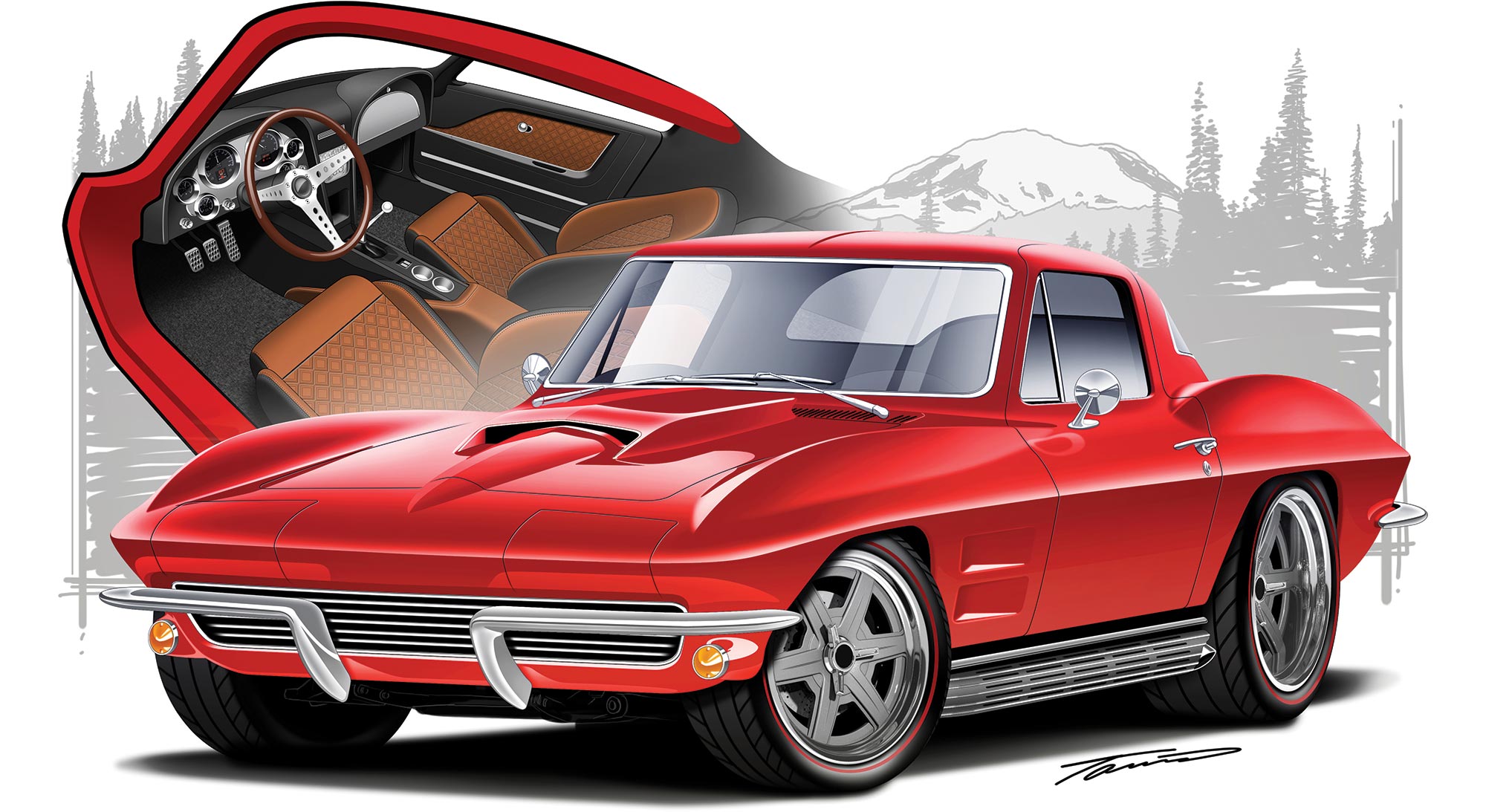
 Feature
Feature Photography BY Wes Allison
Photography BY Wes Allison
asically every muscle car enthusiast has no problem recalling the person or event that pulled them into the scene. Marc Albright remembers the path quite clearly. “My dad got me into cars as a young kid,” Marc says. “He raced Formula V in his youth, which was always his interest growing up. That passion carried over to me early on, as every year we would go to the Long Beach Grand Prix for my birthday because I had such a love for IndyCars.”
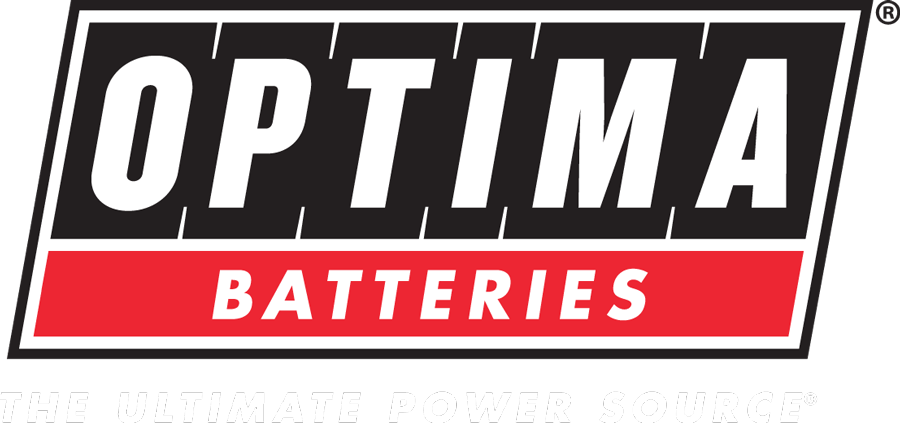
 FEATURE OF THE MONTH SPONSORED BY OPTIMA BATTERIES
FEATURE OF THE MONTH SPONSORED BY OPTIMA BATTERIES Feature
Feature Photography BY Wes Allison
Photography BY Wes Allison
asically every muscle car enthusiast has no problem recalling the person or event that pulled them into the scene. Marc Albright remembers the path quite clearly. “My dad got me into cars as a young kid,” Marc says. “He raced Formula V in his youth, which was always his interest growing up. That passion carried over to me early on, as every year we would go to the Long Beach Grand Prix for my birthday because I had such a love for IndyCars.”

 FEATURE OF THE MONTH SPONSORED BY OPTIMA BATTERIES
FEATURE OF THE MONTH SPONSORED BY OPTIMA BATTERIESAs luck would have it that marinating process turned out to be a positive for the car and for Marc. A few years down the road, while attending the Del Mar Goodguys show in 2010, he bought the little Chevy a full suspension kit from Detroit Speed consisting of their QUADRALink setup out back and a hydroformed subframe up front. That purchase transpired into a relationship with Detroit Speed’s owner, Kyle Tucker, which led to the car being shipped to the Detroit Speed headquarters in Mooresville, North Carolina, for further R&D on their 1962-1967 Chevy Nova suspension kits and to dial in wheeltubs and header fitment.
 Tech
Tech
 Photography Nick Licata & the Author
Photography Nick Licata & the Authorf all the additions that can be made to any early car for passenger comfort, a modern climate-control system has to be at the top of the list. Riding around on a hot day without A/C can feel like you’re in an oven. When the weather turns cold, it’s even uncomfortable for brass monkeys. Fortunately, we don’t have to suffer due to Mother Nature’s whims no matter what we drive, thanks to Vintage Air.
The heater portion of a climate-control system is relatively simple; hot water passes through the small radiator like a heater core with a blower motor to warm the passenger compartment. On the other hand, air conditioning is more complicated; it cools by removing heat and humidity from inside the vehicle. Basically an A/C system takes in air from the passenger compartment into the evaporator where it is passes across a coil assembly that absorbs heat and converts humidity to water droplets (that’s why the evaporator case has a drain hose to the outside of the car). Cooled air comes out of the outlets while the heat is carried to the condenser in front of the radiator. What makes this all possible is the refrigerant, commonly known as 134a; it’s a high-pressure liquid on the high side of the system, and a low-pressure gas on the low, or suction side. As Rick Love of Vintage Air explains, “refrigerant absorbs heat as it changes states from a liquid to a gas in the evaporator and then dissipates heat as it changes from a gas to a liquid in the condenser. Heat is absorbed through evaporation and dissipated through condensation (change of states).”
 Feature
Feature Photography BY THE AUTHOR
Photography BY THE AUTHOR
hen it comes to holding onto memories, we all go about it in different ways. For some folks the memories alone are self-sustaining while others rely on inanimate objects to help preserve them. Those objects can come in all forms. For Alex Deck, some of his fondest memories are preserved in the form of a 1980 Camaro Z28. It is a tangible link to his youth and the memory of his father Michael, who died in 2015.
The Z was purchased new as a daily driver by the elder Deck and was given a plethora of ’80s bolt-on performance upgrades early on. Having been exposed to the car as a youngster, Alex recalls, “When I was a kid I couldn’t say Camaro, so it was always the blue car, and I would say that I wanted the blue car when I got older.” By the time he was old enough to get the blue car, it had an expired 350 and had suffered a Dark Blue metallic respray from Maaco. “When I was a senior in high school I put a crate engine in it from Year One,” he notes. That transplant allowed him to have a fully functional weekend cruiser during his senior year.
The one thing that Alex was never comfortable with while at the wheel of the Camaro was how it stopped. “Driving it around I realized that the drum brakes at the rear weren’t going to cut it,” He explains. “I spoke to the guys at Bent Metal Customs (BMC) and told them that I wanted some discs and maybe some wheels.” The crew at BMC dipped into their supplier’s parts catalogs and set the Z on the tarmac with some Forgeline wheels wrapped in sticky Michelin rubber along with some Baer six-piston calipers and 14-inch rotors. As is often the case when having custom work done on a car, you go in for one thing and everything else just snowballs around it. Rolling and stopping needed a proper suspension to be fully appreciated. Another dive into the catalogs yielded some Detroit Speed suspension hardware and JRi springs and shocks.
 Tech
Tech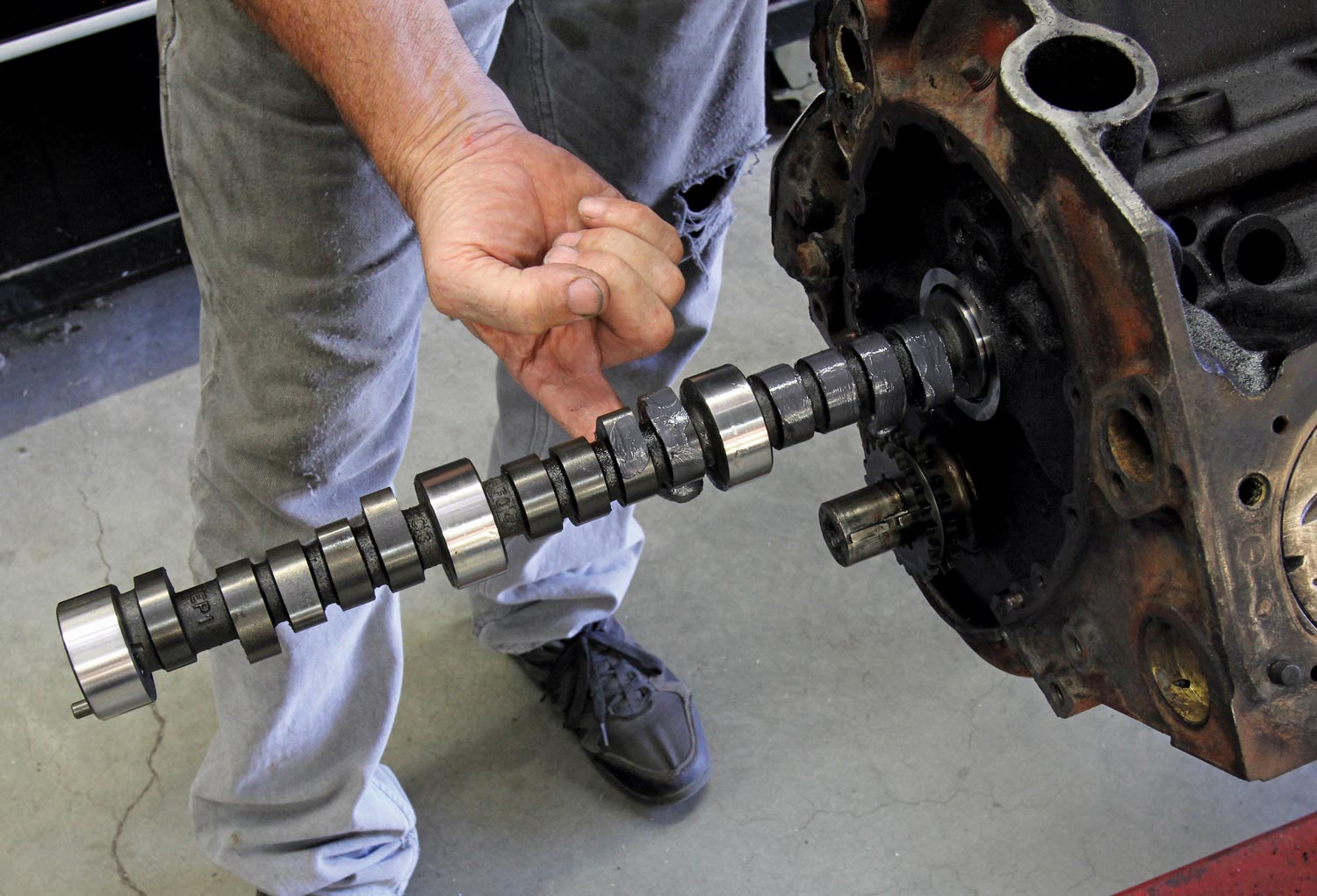
 Photography BY THE AUTHOR
Photography BY THE AUTHORhere was a time when the hot-rodding world was flat. Not in the ships-falling-off-the-edge-of-the-planet sense, but in that every hopped-up cam grind was of the flat tappet variety. They were plentiful, cheap, and easy to install. But, much like a vinyl record collection, are they still relevant in the modern performance scene?
In a world of roller cams, roller rockers, and a pace of life that is absolute grease lighting, we stopped to ask if some of the speed parts of our past still have a place in modern engine building. The response from today’s aftermarket manufacturers was a resounding “duh.”
“Hydraulic, flat tappet cams are cheap and still make plenty of power for most street-driven cars,” Zach Woods of Speedway Motors says. “The other place flat tappets are still very common is grassroots dirt track racing.”
 Photography BY THE AUTHOR
Photography BY THE AUTHORhere was a time when the hot-rodding world was flat. Not in the ships-falling-off-the-edge-of-the-planet sense, but in that every hopped-up cam grind was of the flat tappet variety. They were plentiful, cheap, and easy to install. But, much like a vinyl record collection, are they still relevant in the modern performance scene?
In a world of roller cams, roller rockers, and a pace of life that is absolute grease lighting, we stopped to ask if some of the speed parts of our past still have a place in modern engine building. The response from today’s aftermarket manufacturers was a resounding “duh.”
“Hydraulic, flat tappet cams are cheap and still make plenty of power for most street-driven cars,” Zach Woods of Speedway Motors says. “The other place flat tappets are still very common is grassroots dirt track racing.”
 Feature
Feature
 Photography BY Grant Cox
Photography BY Grant Coxim Meyer was a retired machinist, but he was also a craftsman who built cars for the love of building cars. He didn’t do it for attention, even though the cars he built over his 50 years in the hobby got plenty of it due to the quality of his work. He made a name for himself in the Wichita, Kansas, area for his prior builds, which included everything from 1955 Chevys to Model T hot rods. He simply liked going to car shows with the family and hanging with his buddies who shared his passion.
“Growing up we went to every local car show and rod run in the Wichita area,” Jim’s son, Dusty, remembers. “Whatever car he was working on at the time he would enter in the show; those weekends made for great family memories.”
Although Jim died in 2019, he left behind a legacy of great builds, including this 1962 Bel Air. Finished in 2016, this 1962 Chevy was his final build. It represents the ride of a lifetime—a lifetime of knowledge, experience, craftsmanship, detail, and, most importantly, passion.
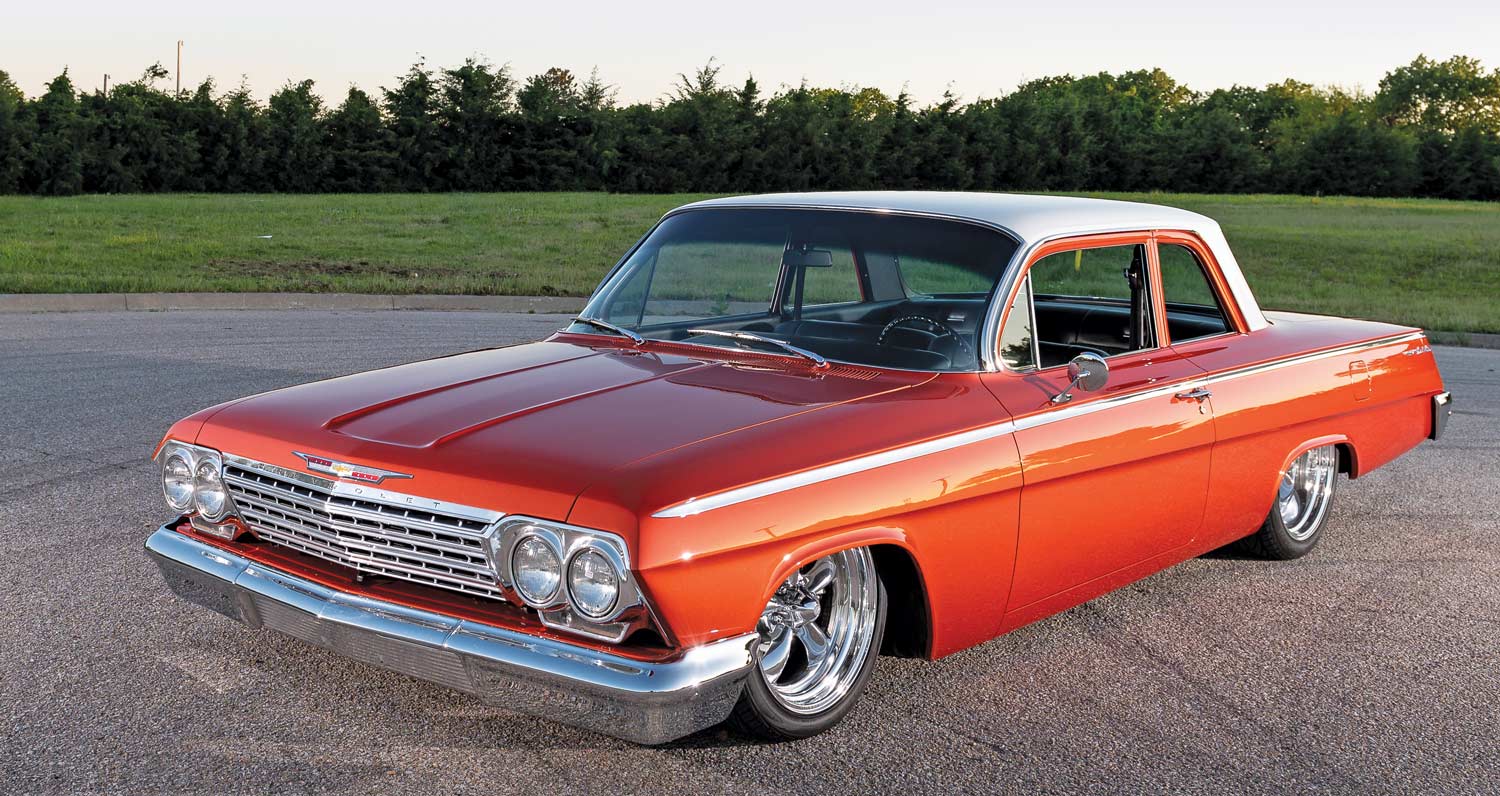
Power comes by way of a stock LS1, as Jim’s idea for the portly Chevy was to keep it chill—just a mild street cruiser. Again, he built cars for himself, not for outside approval, yet the smoothed firewall and extremely sanitary engine room would suggest otherwise. The custom stainless headers add to the attraction and dump onto a 2-inch exhaust baffled by a set of Dynomax mufflers for a sedate yet authoritative rumble.
A factory 4L60E transmission worked over by the crew at The Tranny Shop sends grunt through a two-piece driveshaft spinning 3.73 cogs housed in a 9-inch rearend armed with Moser axles. Yes, the car has three pedals and a floor-mounted shifter, with the shifter ball indicating a four-speed manual transmission exists. Dusty explains, “The simple reason is that my dad just liked the way a manual transmission setup looks, so he made it appear like the car has a four-speed.”
 Tech
Tech PHOTOGRAPHY BY Jason Scudellari
PHOTOGRAPHY BY Jason Scudellari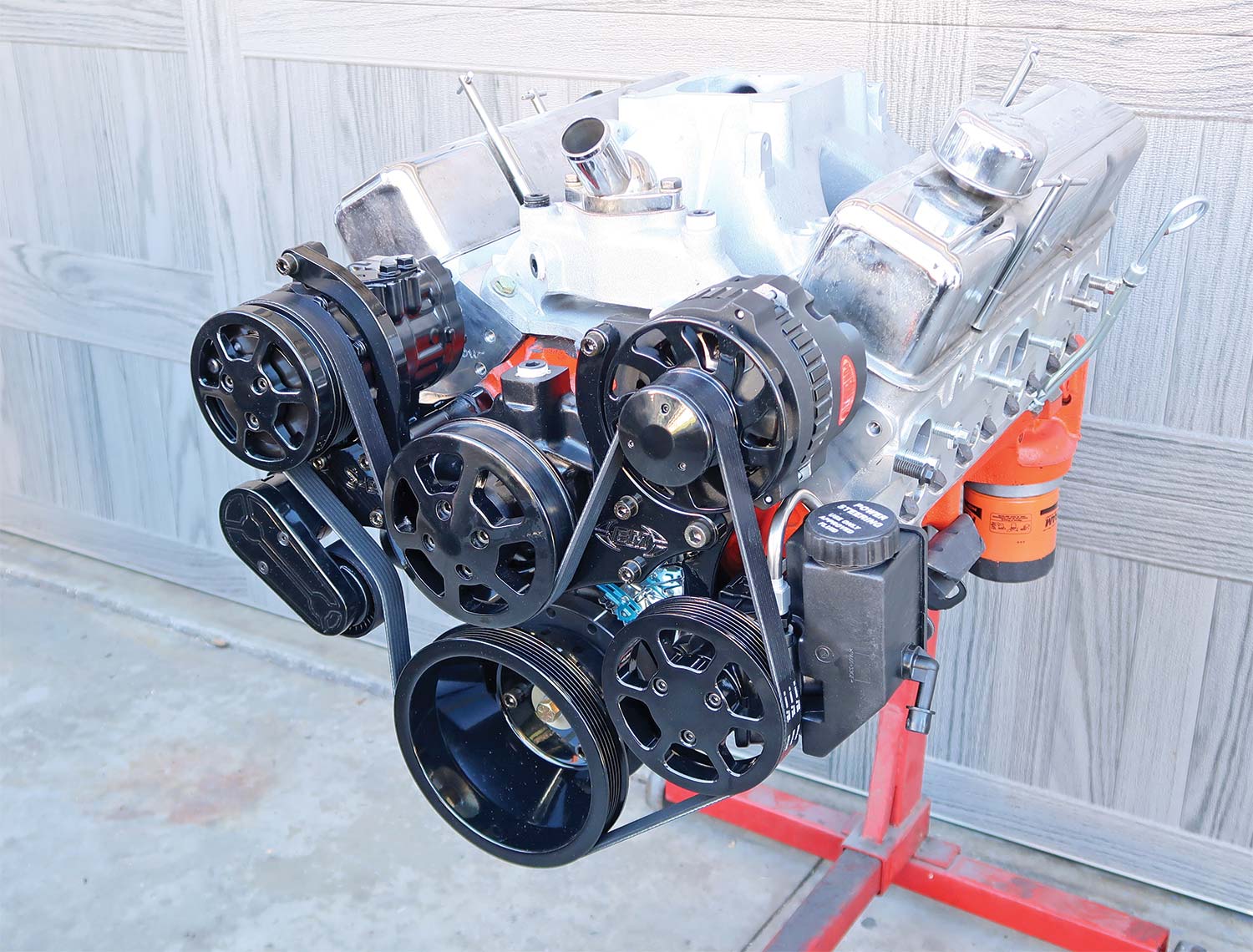
 PHOTOGRAPHY BY Jason Scudellari
PHOTOGRAPHY BY Jason ScudellariSINGLE
SCENE
any of our favorite cars wearing a Chevrolet nameplate were produced decades ago, but while we may love those vintage vehicles, there’s no disputing they can often benefit from more recent technology. Things like electronic ignition, fuel injection, and an overdrive transmission are common updates. Of course there are less-complicated improvements that can also have a big impact. One example is a serpentine accessory drive system.
Rather than multiple V-belts and the stacked pulleys that are often required to spin engine-driven accessories, a serpentine system uses a single belt. The obvious advantage is that a lone belt with all the pulleys on the same plane takes up much less room on the front of the engine. There are also a number of other reasons to make the switch. A single, flat belt is much more efficient than multiple V-belt drives due to reduced friction. And the use of an automatic tensioner reduces maintenance and allows all the engine-driven accessories to be mounted solidly, as they don’t have to be moved to tighten the belt. Another benefit is the spring-loaded tension absorbs harmonics that occur in the drivebelt in operation. In addition, if a serpentine belt has to be changed it eliminates the need to remove and readjust a number of other belts, which is often the case with V-belts.
 Feature
Feature

SUPER-RARE 396
CHEVELLE 300
DELUXE SS
 Photography BY THE AUTHOR
Photography BY THE AUTHORn 1969, for the first and last time, Chevrolet offered an SS 396 option package called RPO Z25 for Chevelles. Both before and after 1969 the SS 396 was a distinct Chevelle series, and it was available only with V-8 Malibu sport coupes, convertibles, or El Caminos. In 1969, one unique aspect of option Z25 was that it could be had with any model, including the bare-bones V-8 300 Deluxe series two-door coupe and two-door sport coupe.
Chevrolet produced slightly more than a half-million Chevelles in 1969, and the vast majority—some 300,886—were Malibu two-door sport coupes. Only 7,181 of the half-million-plus 1969 Chevelles were 300 Deluxe sports coupes, and of these it’s likely that fewer than 100 were fitted with the SS 396 package, and fewer still came with the potent L78 engine.
It was this incredible rarity, and the car’s Dusk Blue hue, that caught Grady Burch’s eye when he first saw the car in a friend’s garage. Grady is no stranger to über-rare Chevrolet muscle cars and just happens to have a gorgeous, 29,000-mile, unrestored, Dusk Blue, 427 COPO Chevelle in his collection. “As soon as I saw the 300 Deluxe, I thought it would look great next to my Dusk Blue COPO,” Grady says. “The fact that it is such a rare car and still has its original paint and original interior added to its appeal.”
 TECH
TECH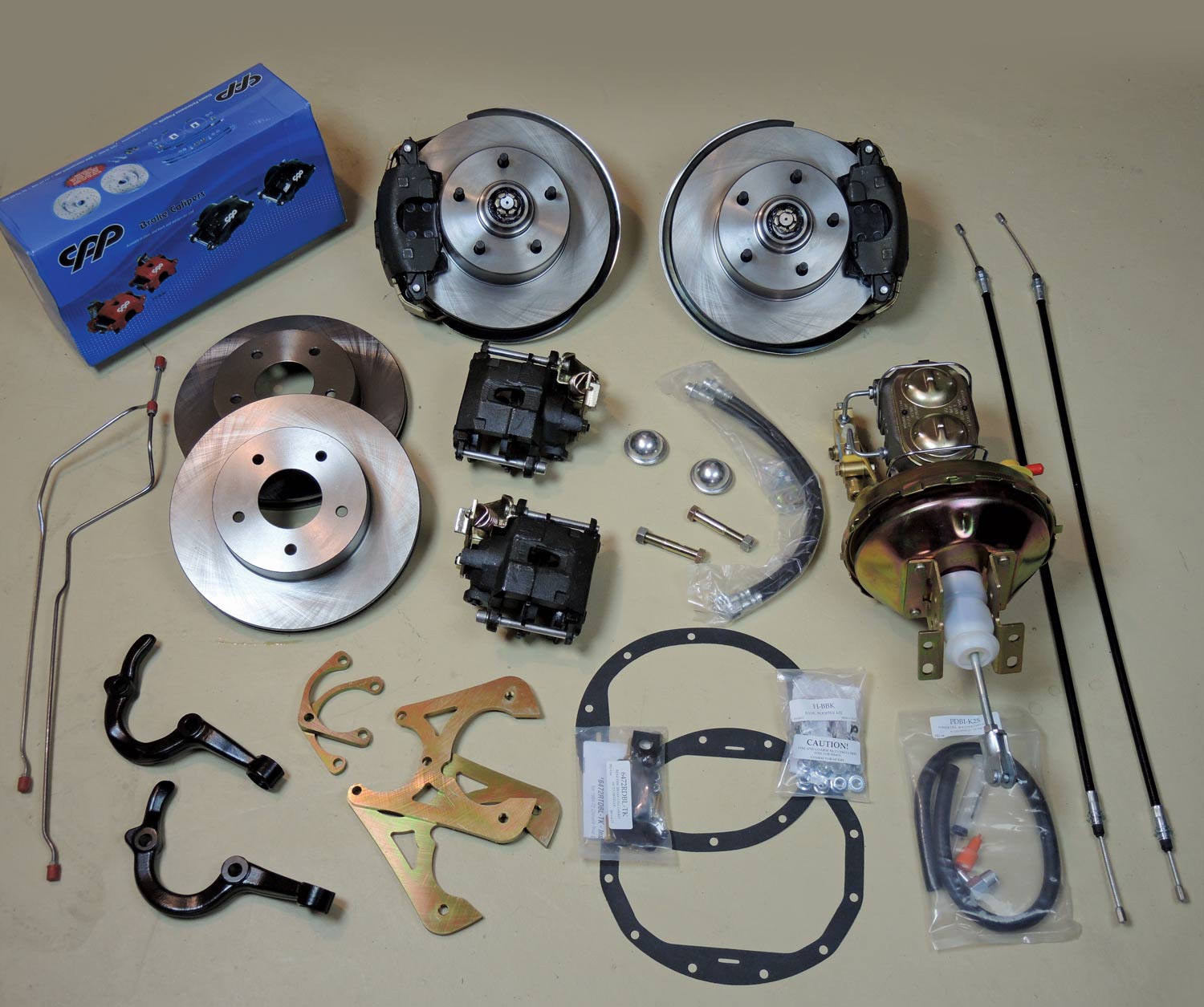
and
Assist
the Stopping
Performance
of Your
Chevelle
 Photography BY THE AUTHOR
Photography BY THE AUTHORhere is one important thing you need to remember about driving original, old cars: They drive and handle like old cars. That’s right, our favorite, unrestored old Chevys just don’t cut the mustard when it comes to braking, cornering, and tight handling. To most of us, however, that’s just part of the charm.
Our 1964 Chevelle remains very much original besides an updated 350 and overdrive transmission. We’re talking original suspension and rearend, door seals, steering, and non-functioning AM radio. And you know what? We’re fine with the excessive wind noise, OK with a little body roll, and actually enjoy the white noise of the small-block. One area that we were not cool with anymore was the single-pot master cylinder and manual drum brakes.
 Tech
Tech
 BY Jeff Smith
BY Jeff Smithhe automotive performance industry is all about improvements. It’s about adding performance or to enhance the driving experience. If the engineers are exceptionally talented, the product does both. TREMEC lit a fire under the five-speed market with the original T-5 that was eventually used in multiple Chevrolet and GM applications in the ’80s, but it wasn’t really designed to handle the torque of a healthy small-block Chevy. This pushed the development of the TKO five-speed that was eventually upgraded to withstand 600 lb-ft of torque.
This five-speed has been a staple overdrive trans choice for many years, but with this following also came the demand for improvements. The biggest issues revolved around its ability to both shift at engine speeds beyond 6,000 rpm and changes that would make it easier to retrofit across several different body styles. Clearly TREMEC has been listening because just recently the company released the TKX as the latest evolution of the venerable five-speed.
The first main point of improvement is that the trans case has been completely redesigned to both reduce its overall height and width while also improving strength. This will allow the new TKX to fit into the entire year span of early Chevelles from 1964-1972. For years, trans swappers have been well aware that early A-bodies require substantial floorpan modifications and often all-new trans tunnel sheetmetal to accommodate the TKO gearboxes. Our sources at both Modern Transmission and American Speed tell us that the new TKX will fit these early cars with sufficient clearance while maintaining a proper driveline angle.

 Bowtie Boneyard
Bowtie Boneyard
 Photography BY THE AUTHOR
Photography BY THE AUTHORhen Chevrolet unveiled the 1958 passenger car lineup, the public was astonished to see that the entire passenger car line (except Corvette) sat nearly 3 inches lower than the 1957s. At the time this was a big deal since all of Detroit was caught up in a race to be the longest, lowest, and widest. The key detail that allowed the new 1958s to sit so low was the novel X-frame they rode on.
Unlike the conventional perimeter frame found under the 1957s, by pinching the side rails together around the driveshaft tunnel—and splitting the driveshaft into two nearly equal halves—the floorpan’s footwells sank closer to the ground without losing any ground clearance. And a lower floorpan allowed for lower cowl height and roof line measurements.
Chevy continued the use of this novel X-frame (and two-piece driveshaft) through the 1964 model year. In this edition of the Bowtie Boneyard let’s examine some X-frame Chevys that met with unfortunate ends on the highways and byways of America, and explore the 348/409 W-motor’s many moods.
Advertiser
- American Autowire49
- American Legend Wheels83
- Art Morrison Enterprises61
- Auto Metal Direct35
- AutoZone16
- Classic Industries63
- Classic Instruments9
- Classic Performance Products4-5, 89, 92
- Dakota Digital91
- Danchuk USA11
- FiTech EFI77
- Gandrud Chevrolet89
- Golden Star Classic Auto Parts7
- Heidts Suspension Systems85
- Lokar2
- Performance Online33
- Roadster Shop25
- Scott’s Hotrods ‘N’ Customs83
- Speedway Motors47
- Steele Rubber Products31
- Tuff Stuff Performance Accesssories85
- Vintage Air6
- Wilwood Engineering13
- Year One89



